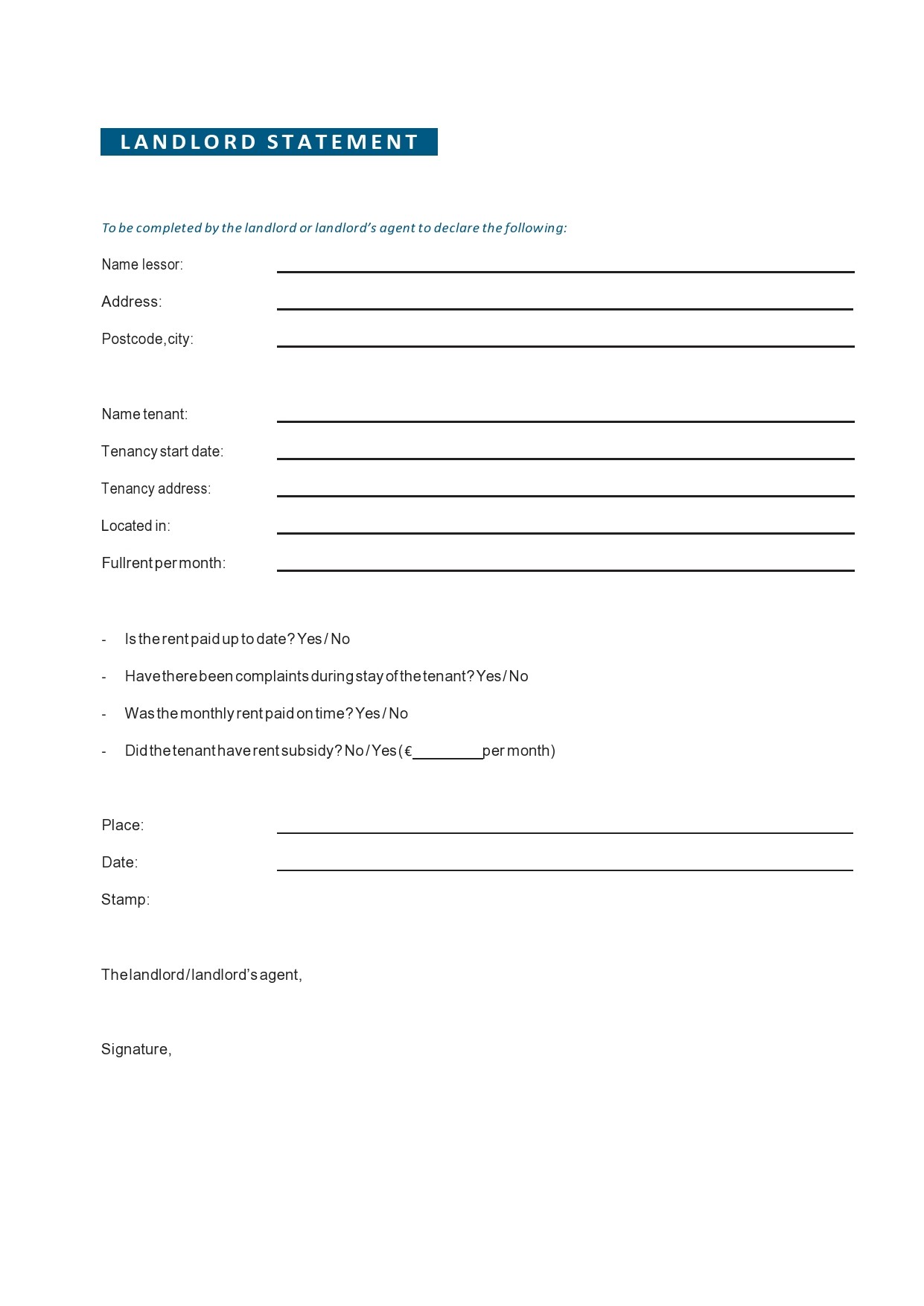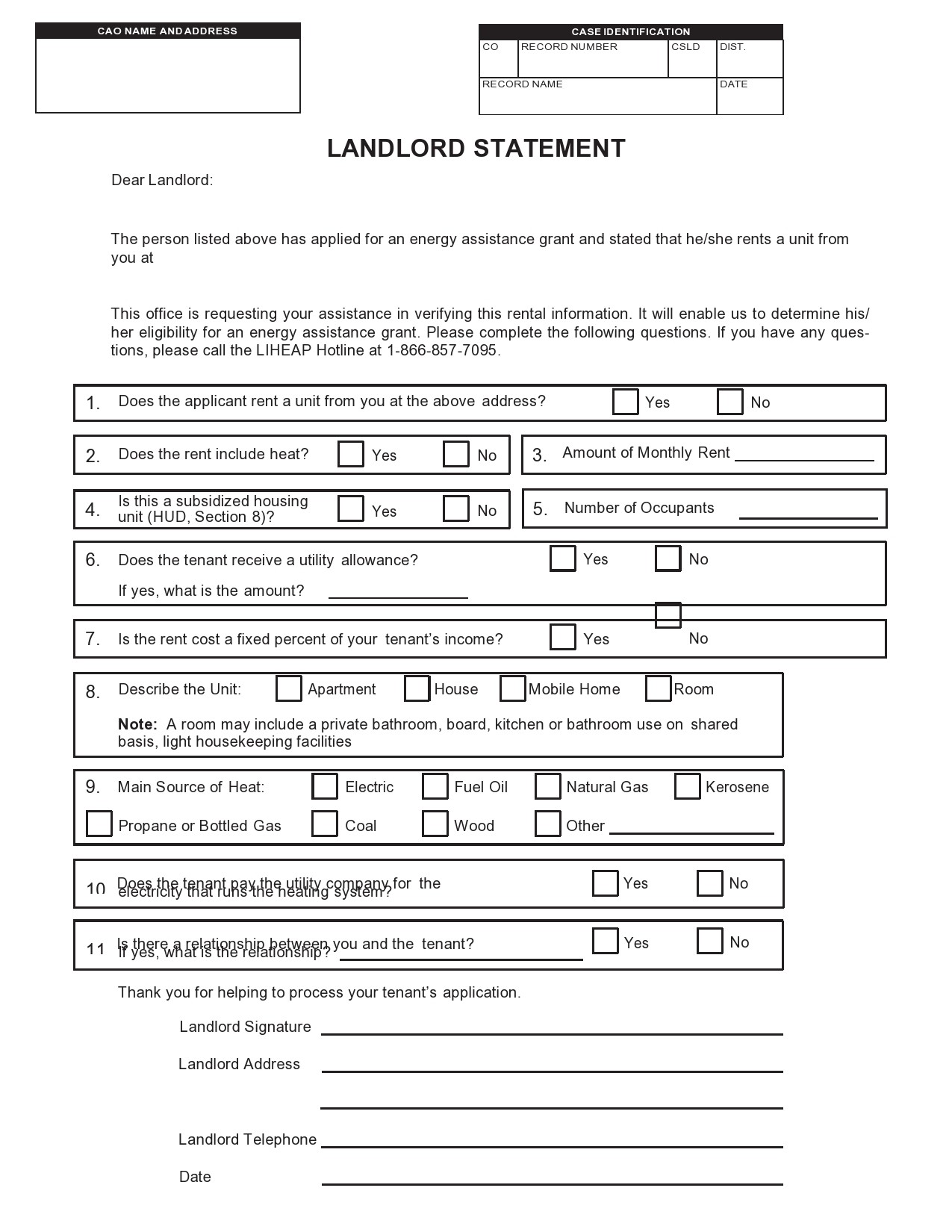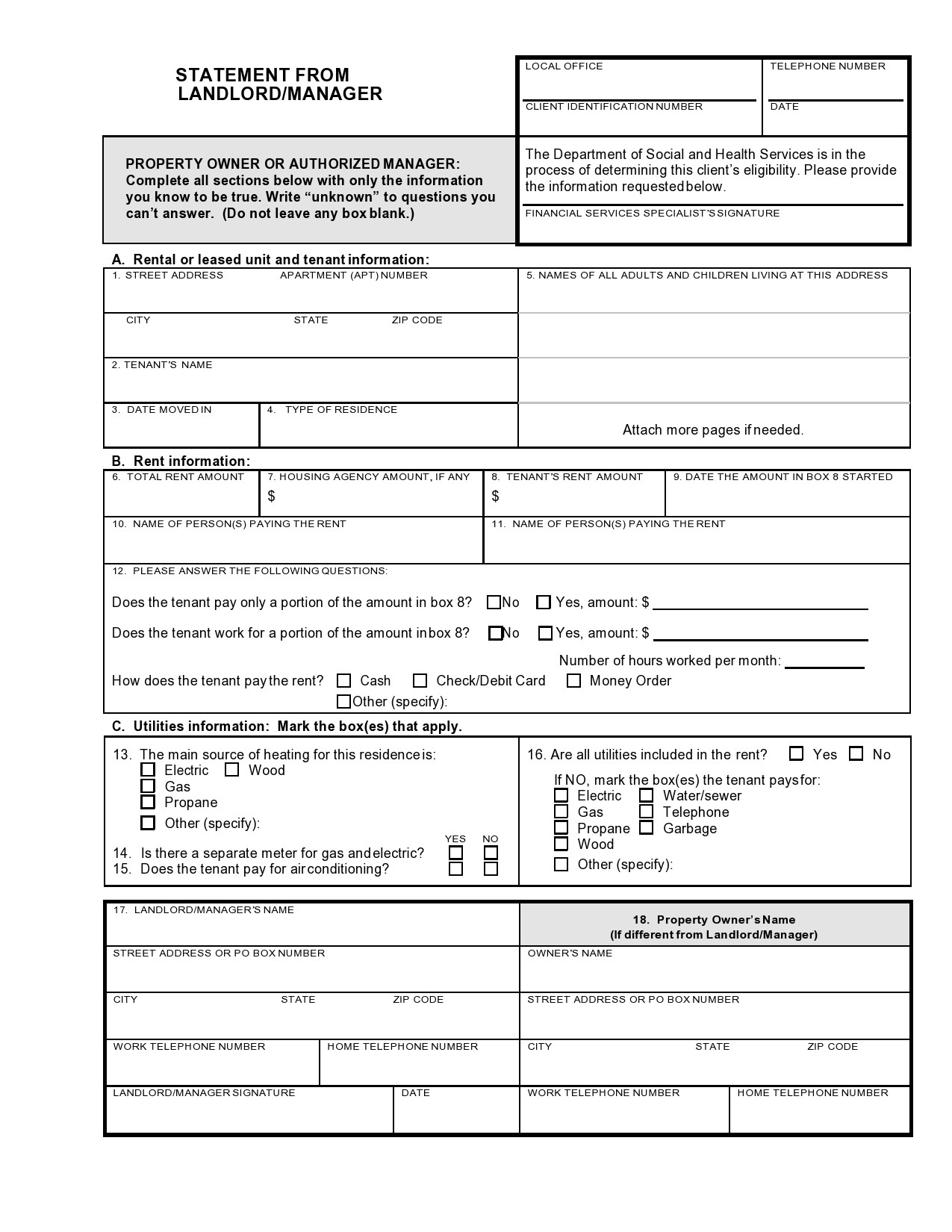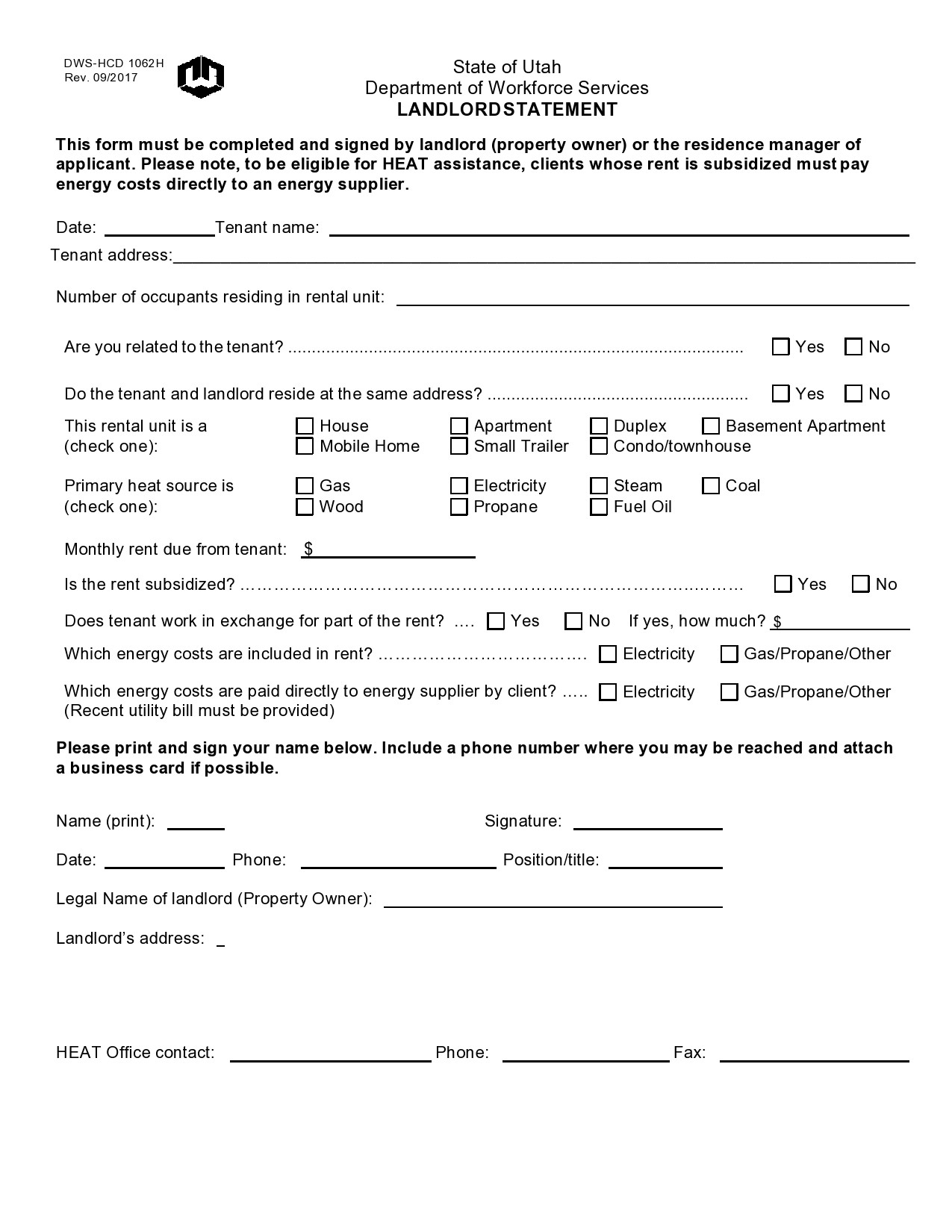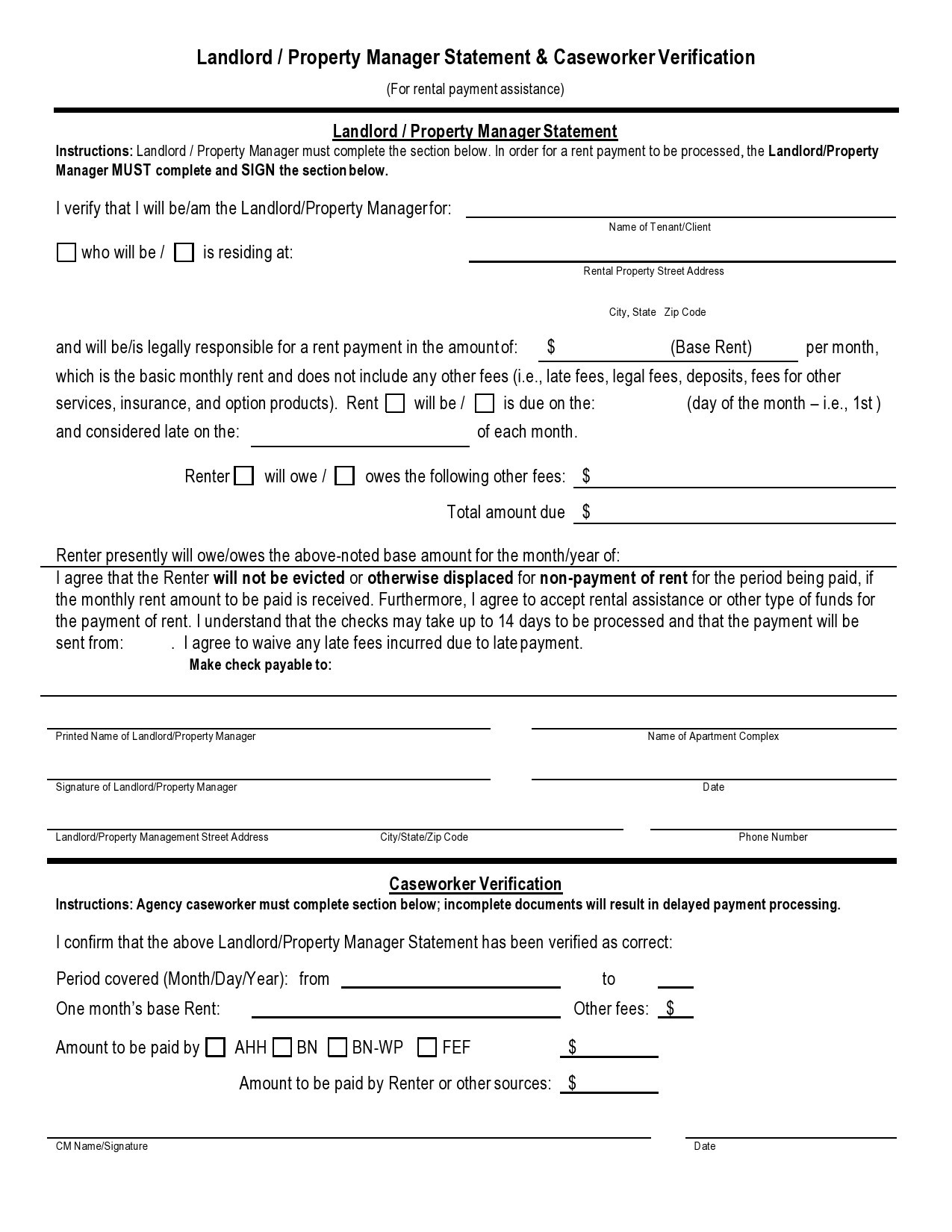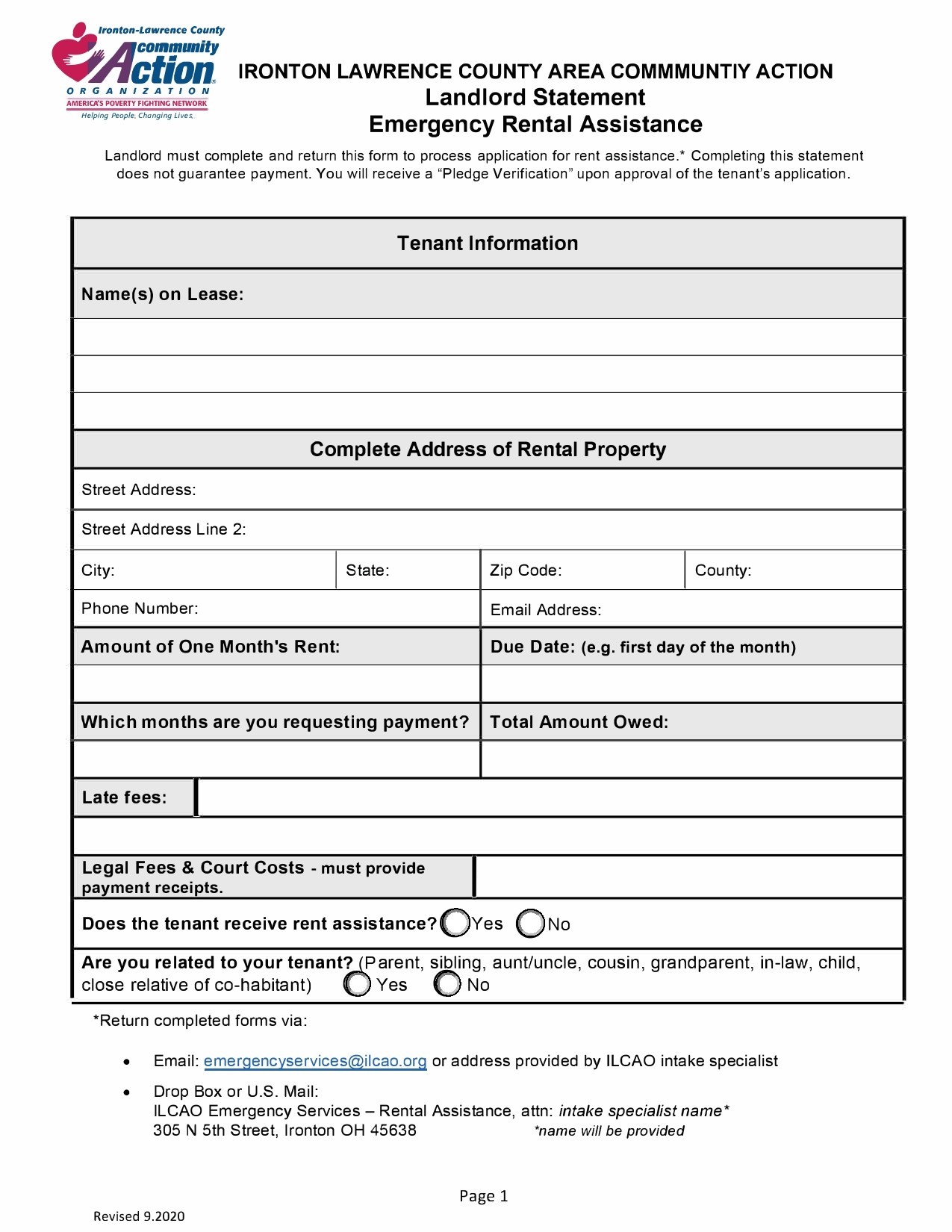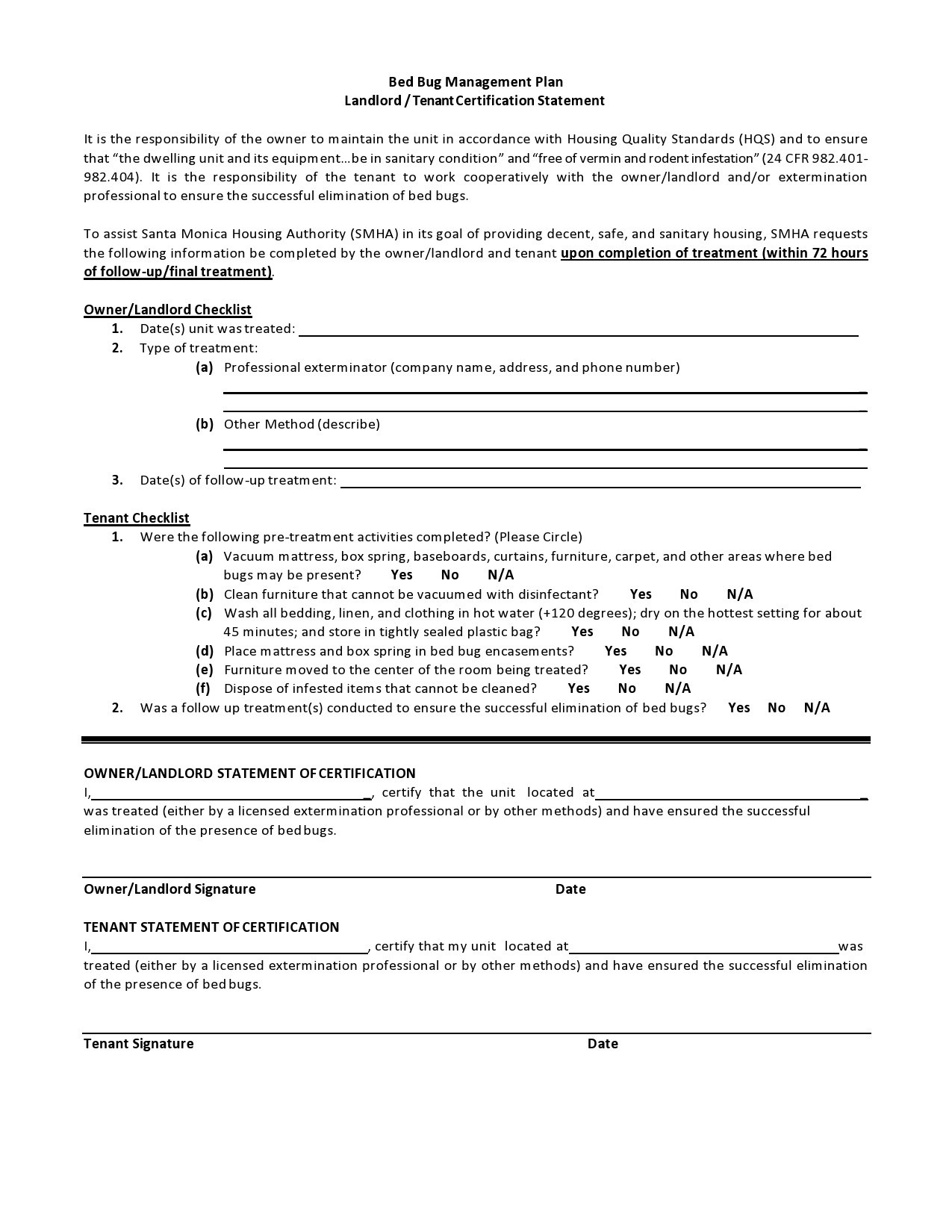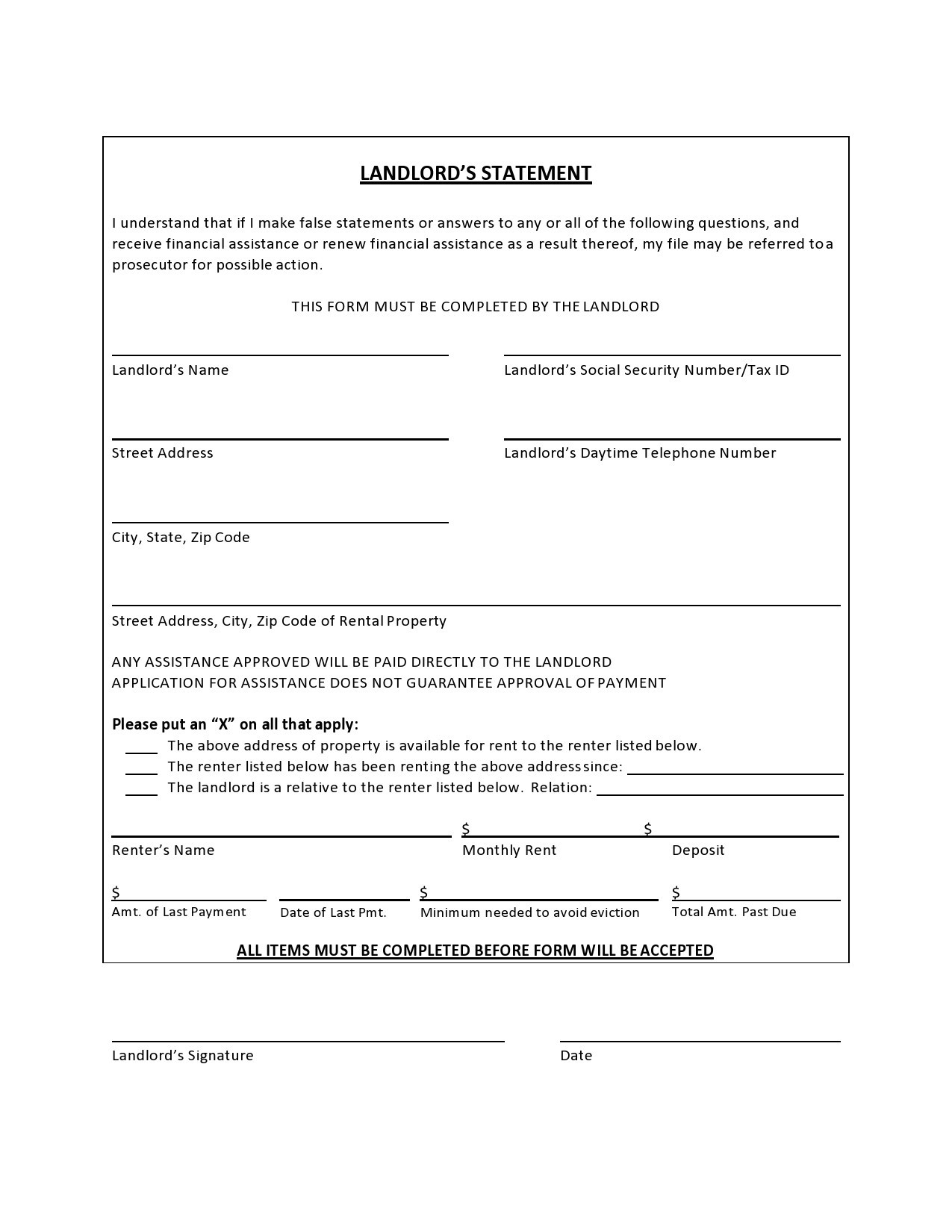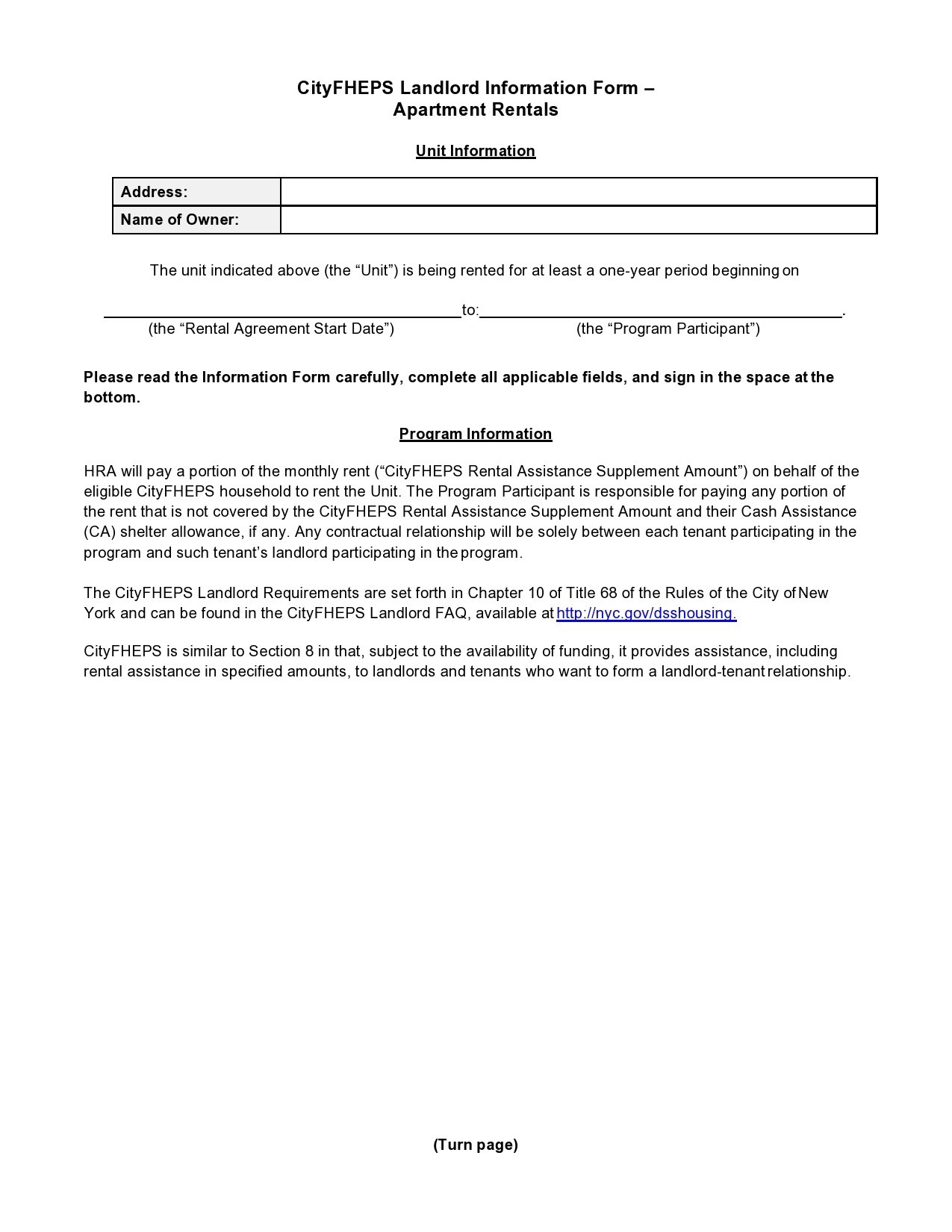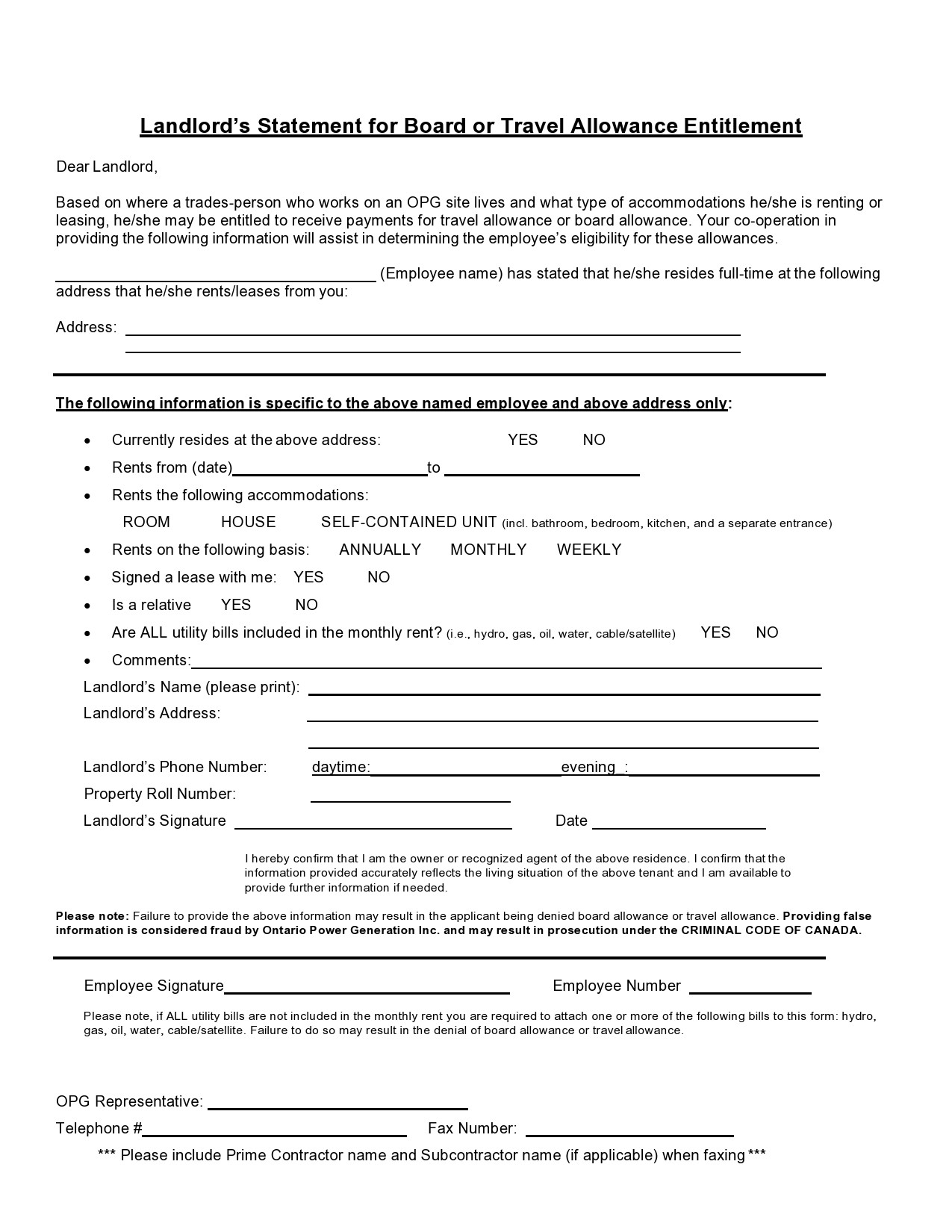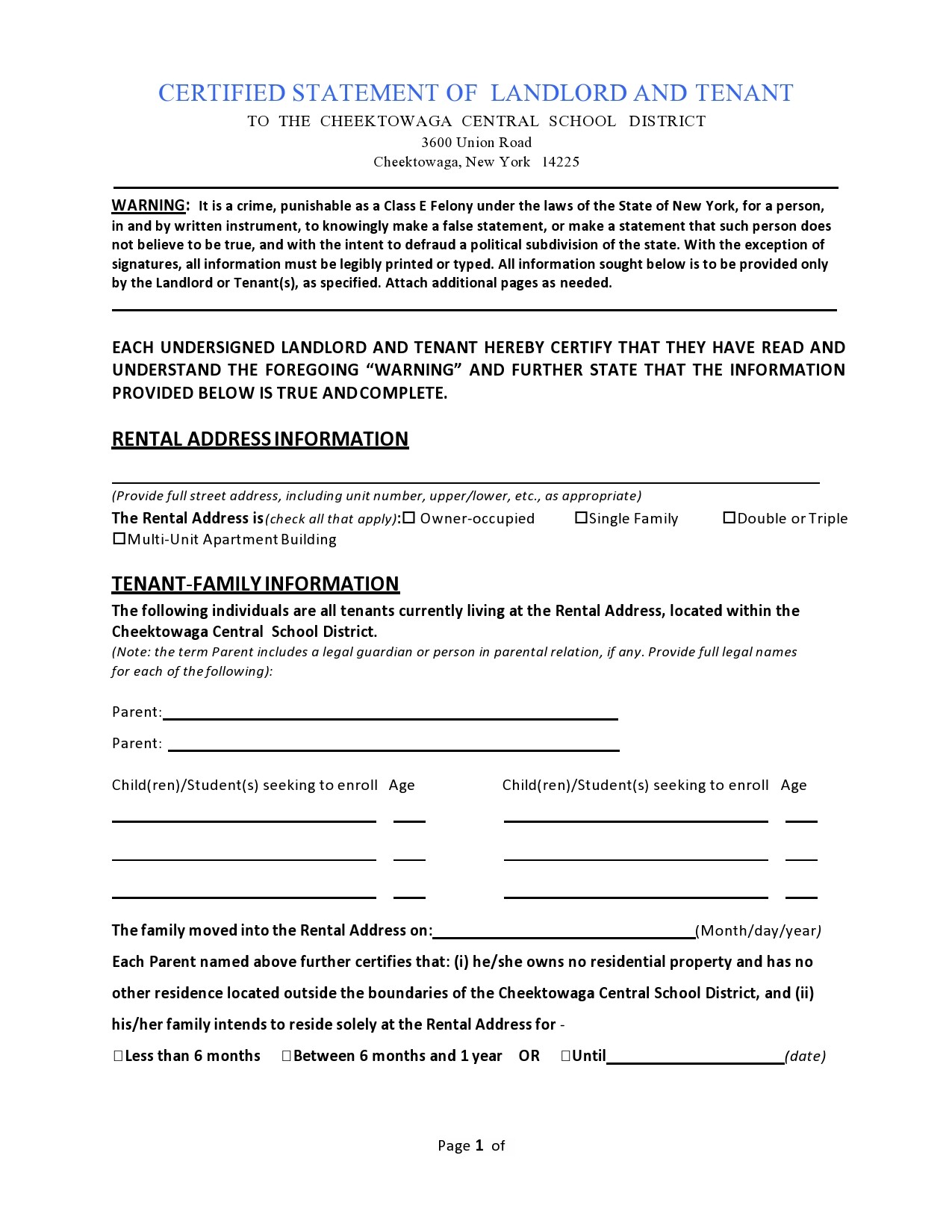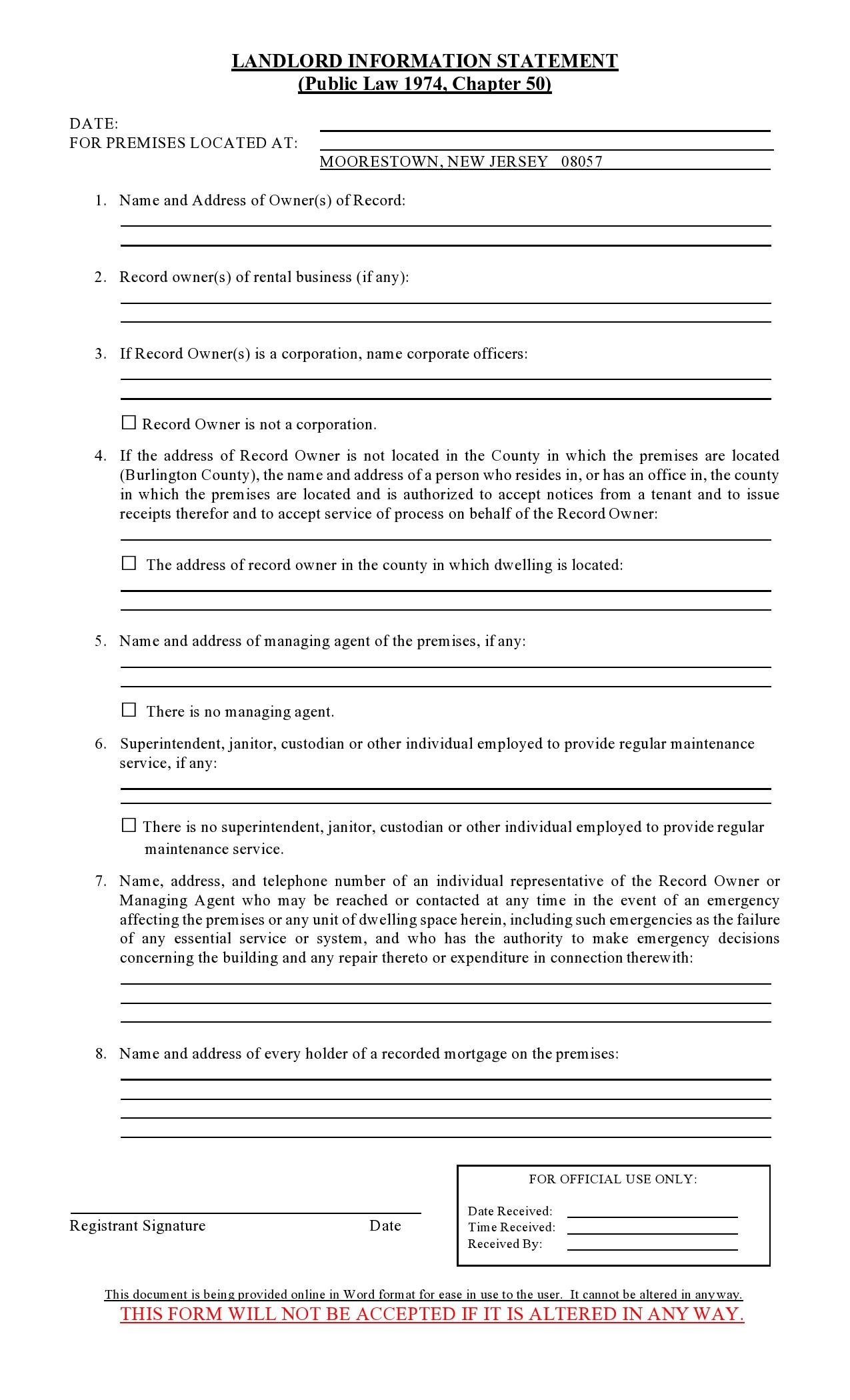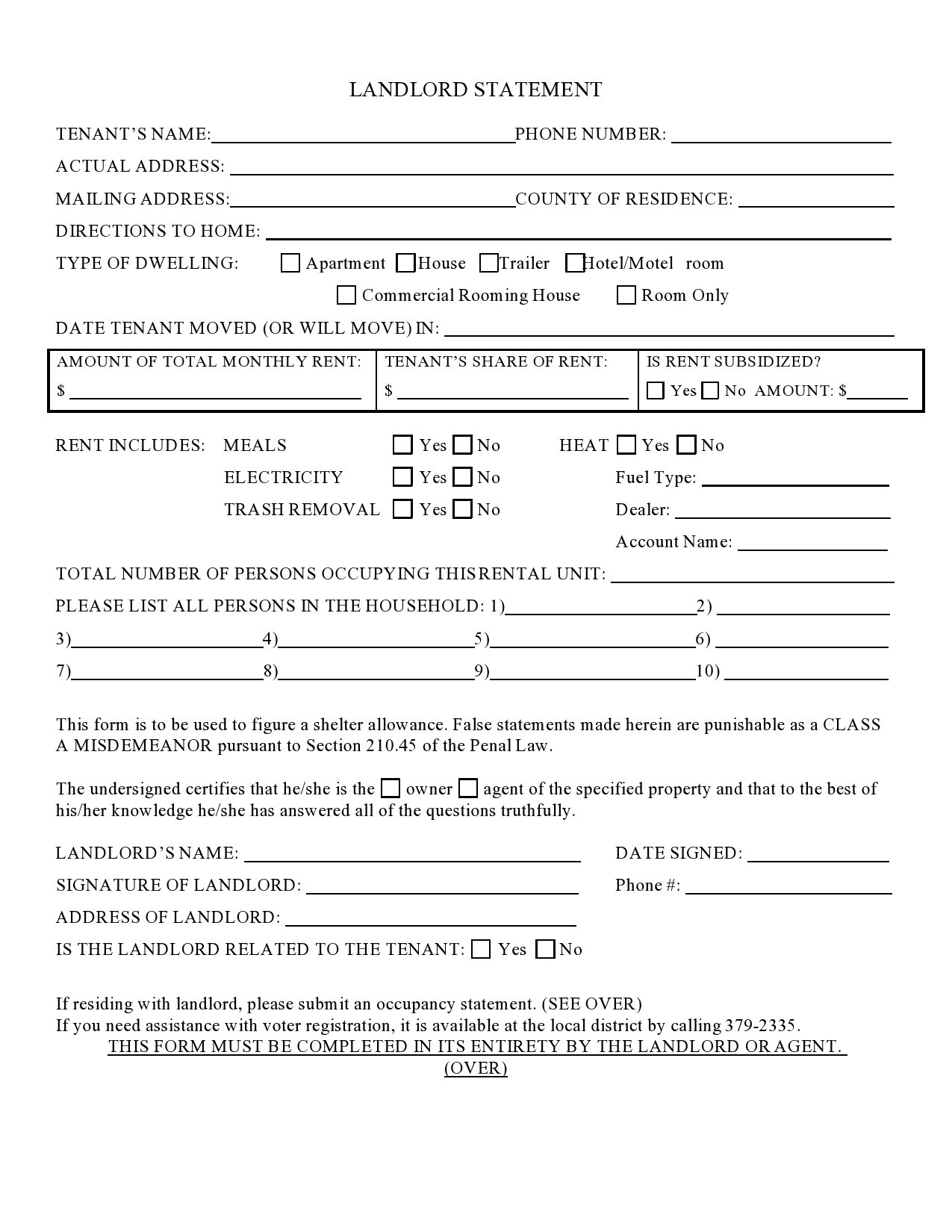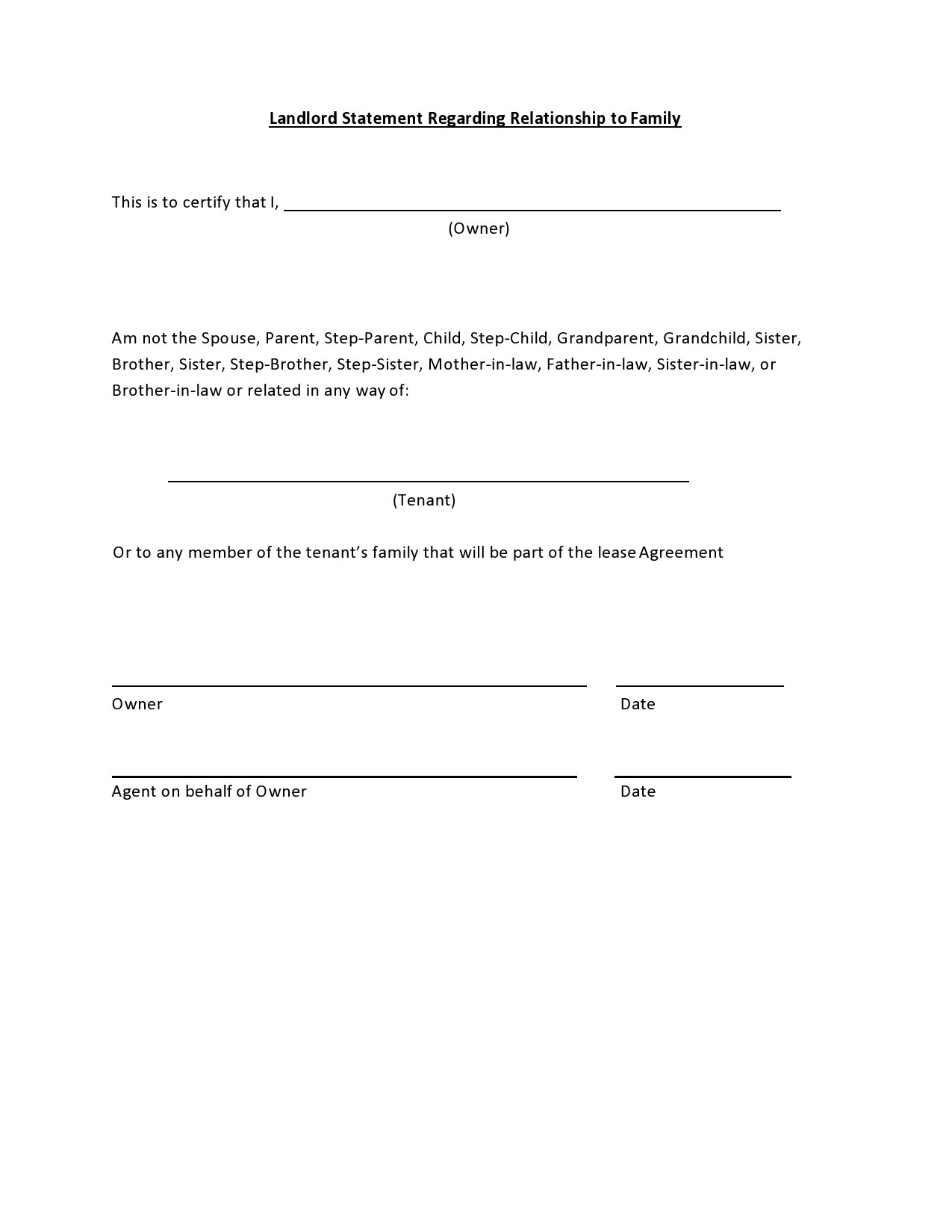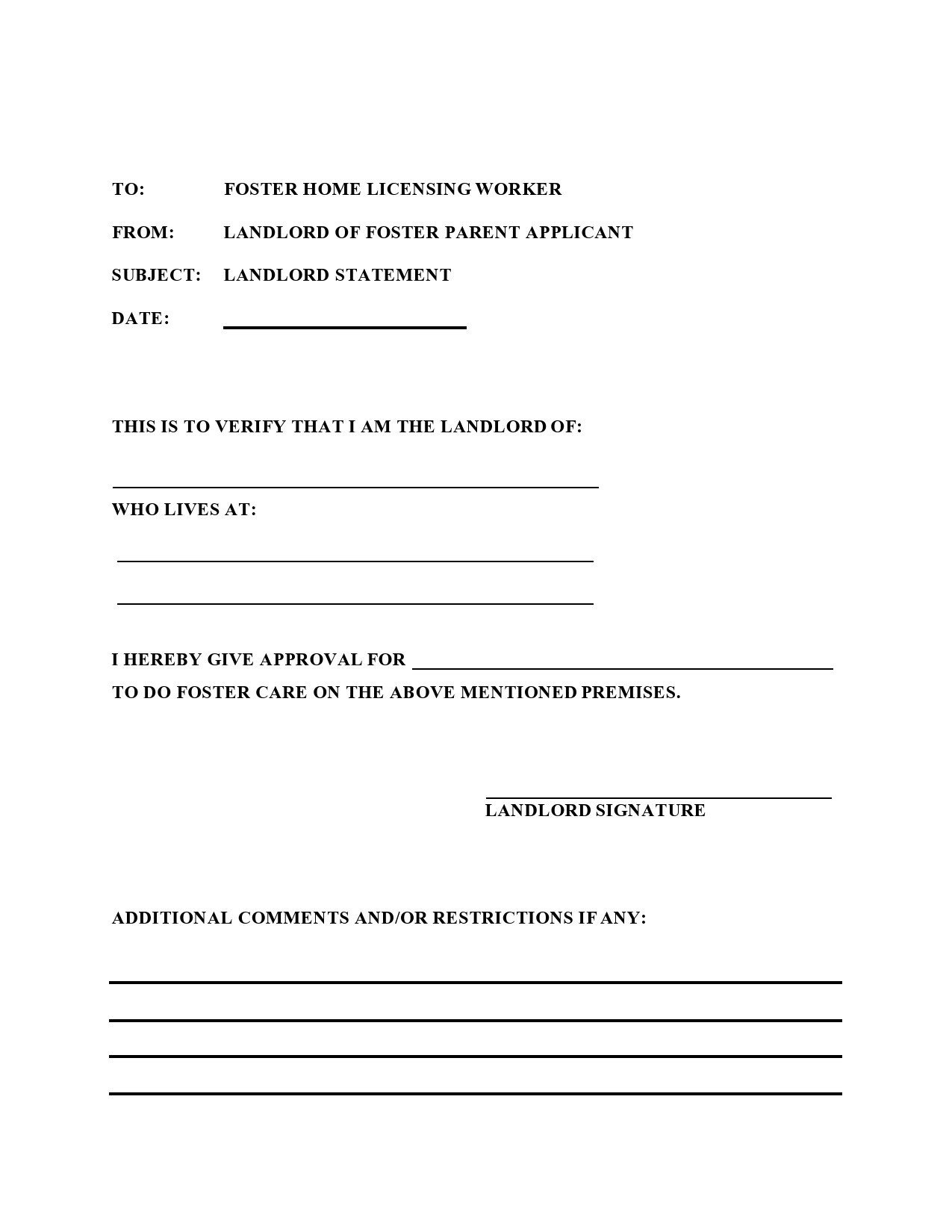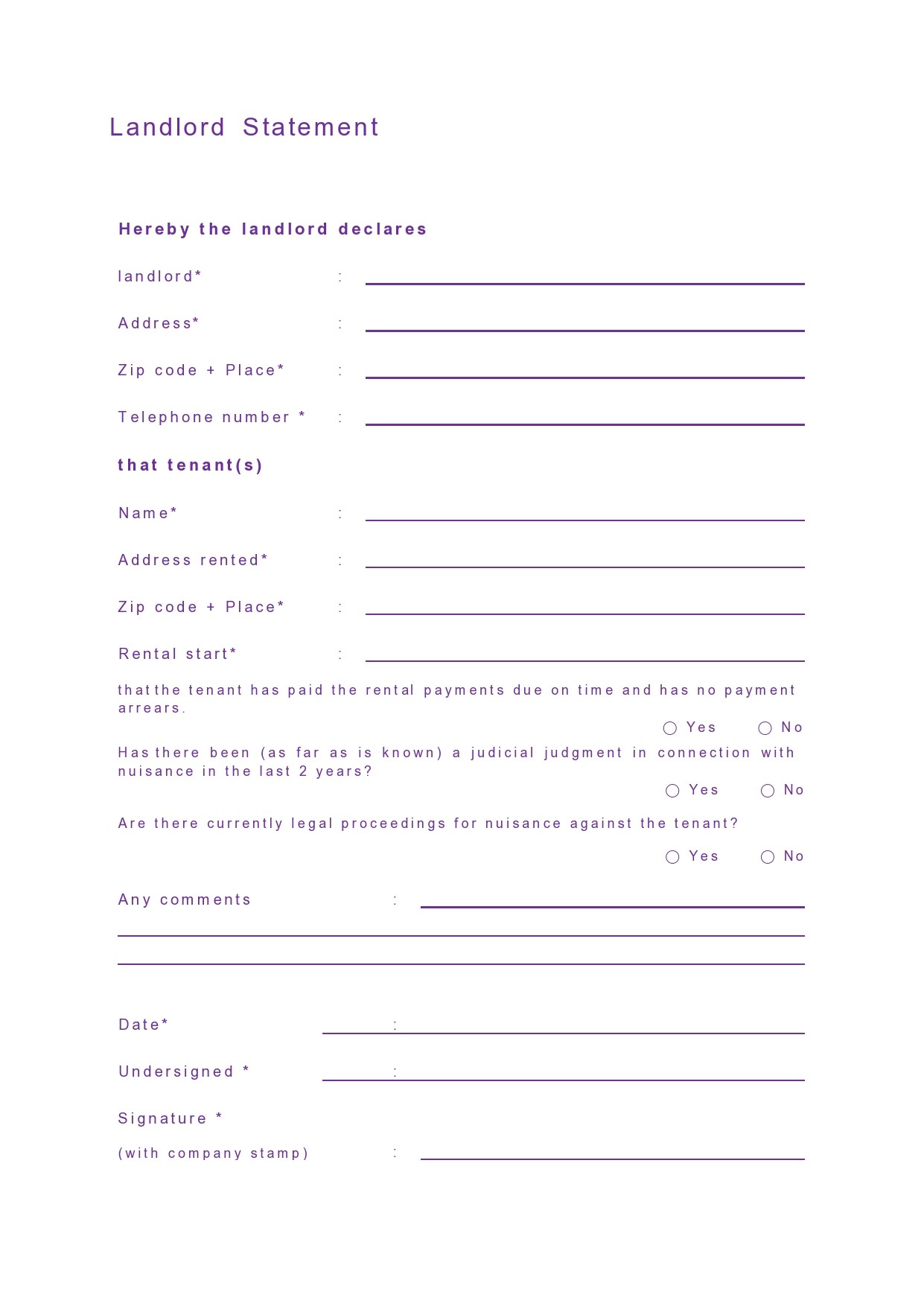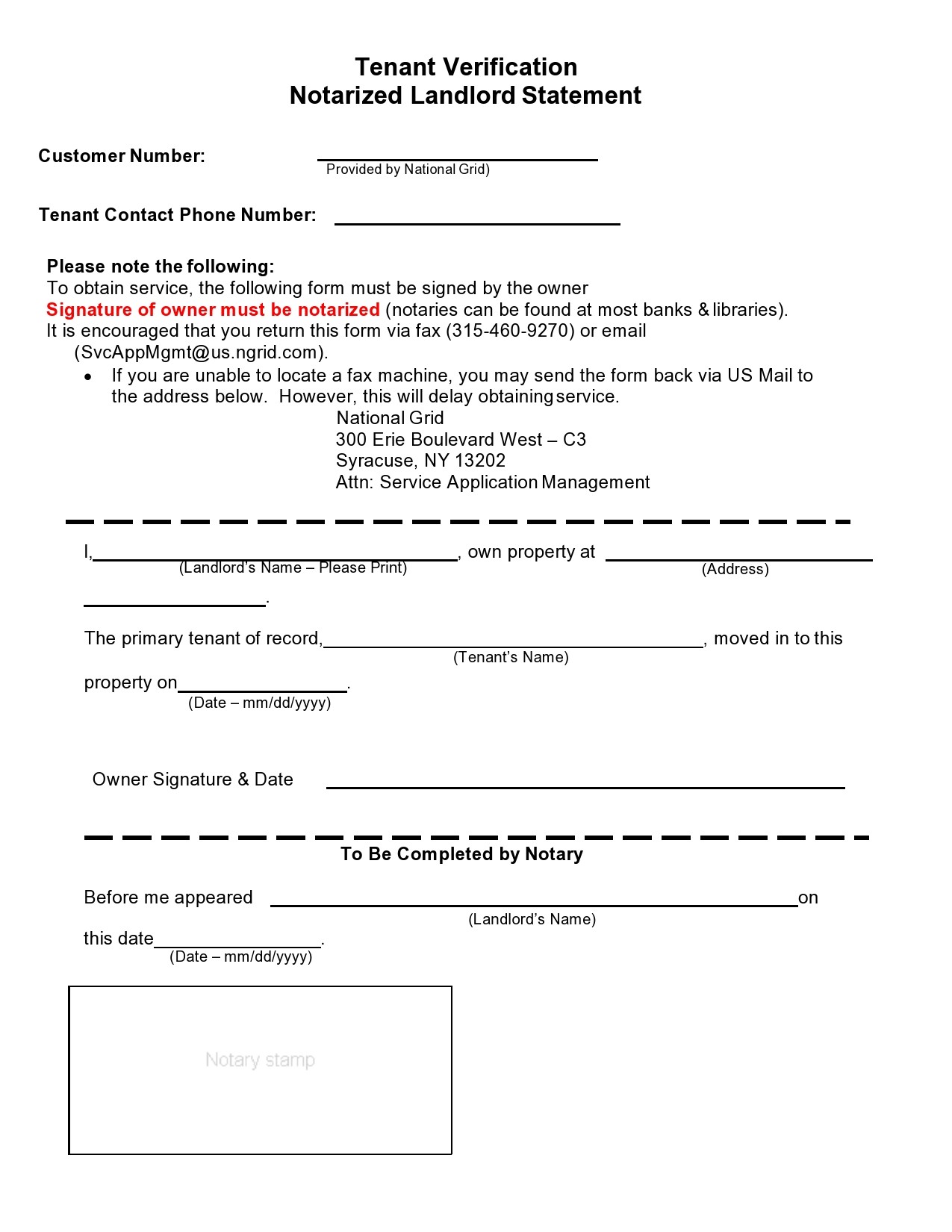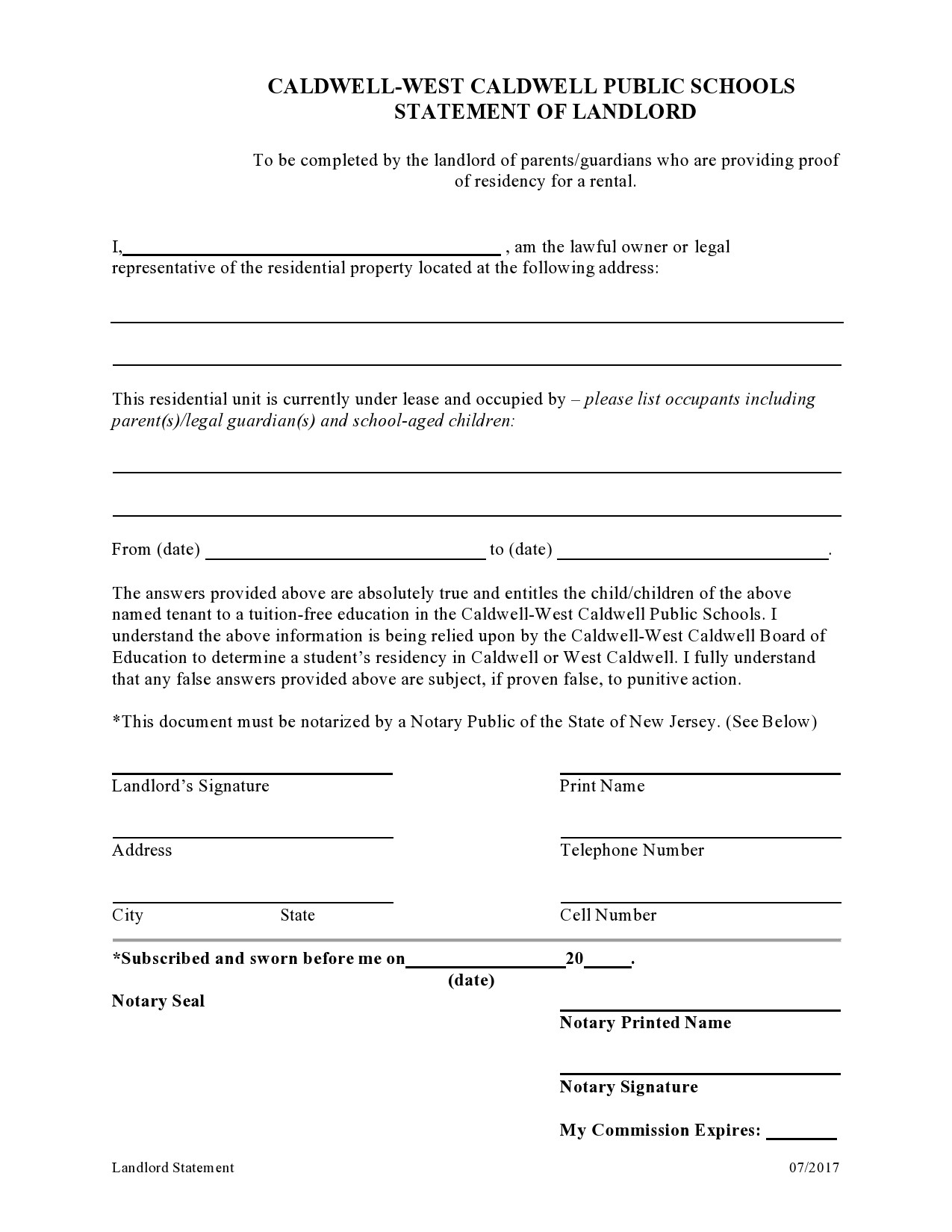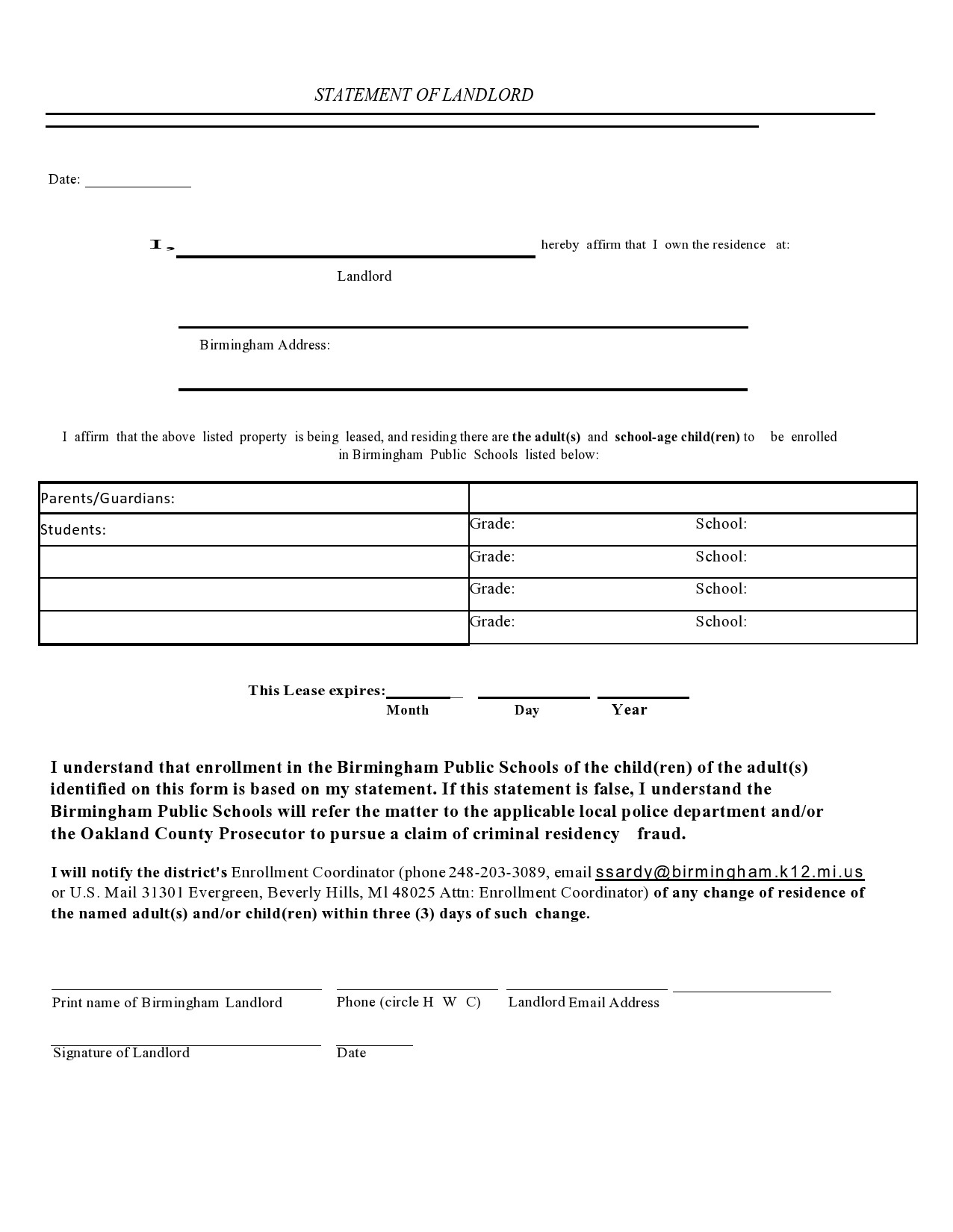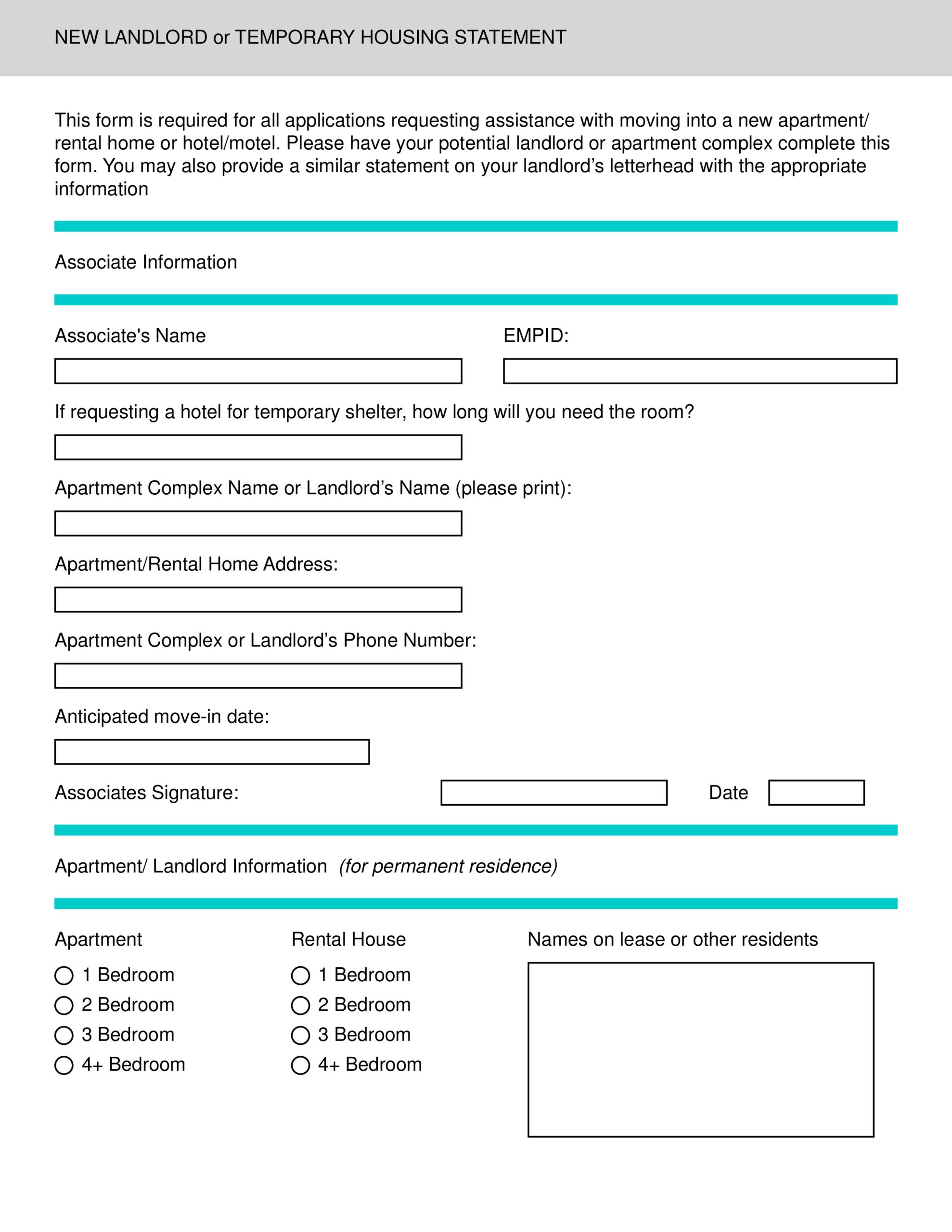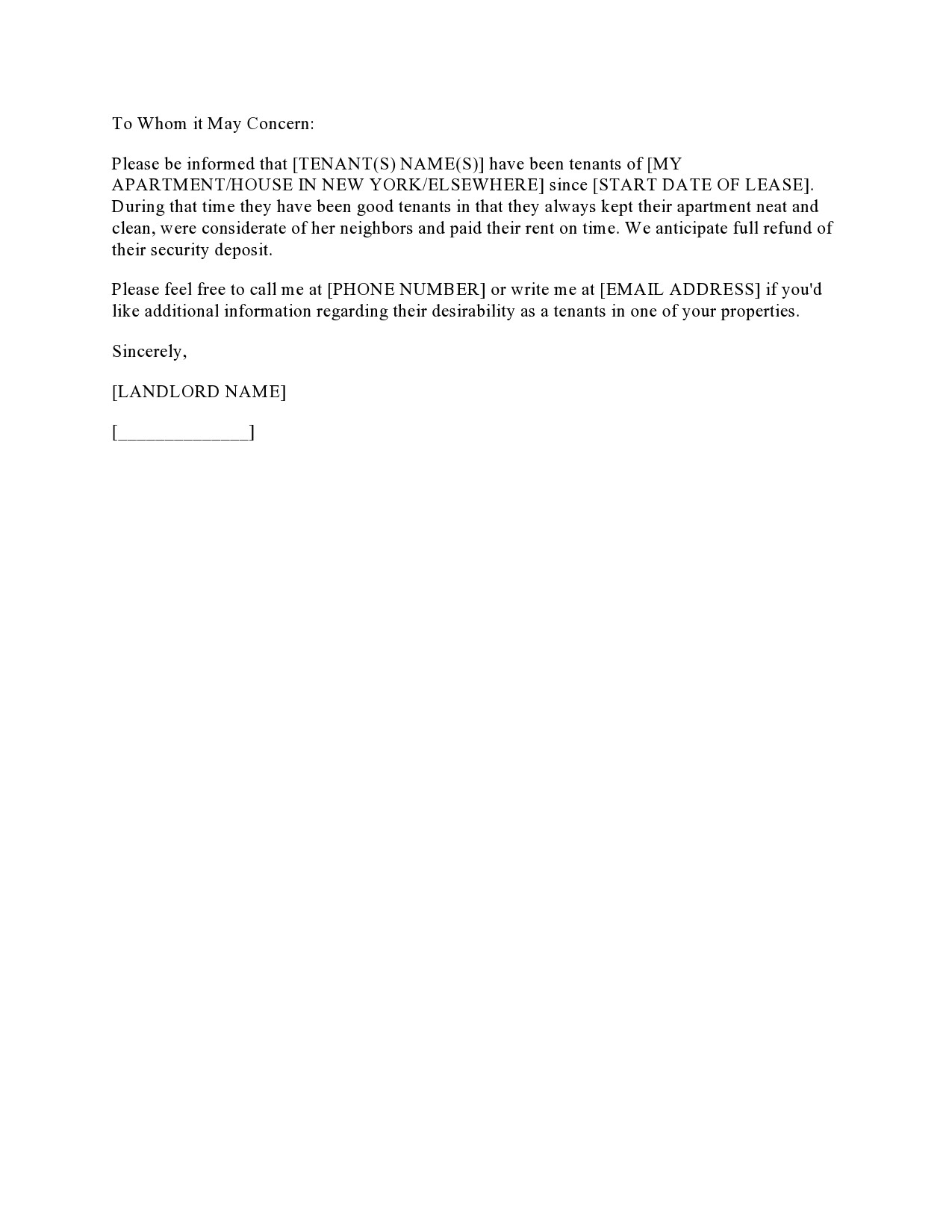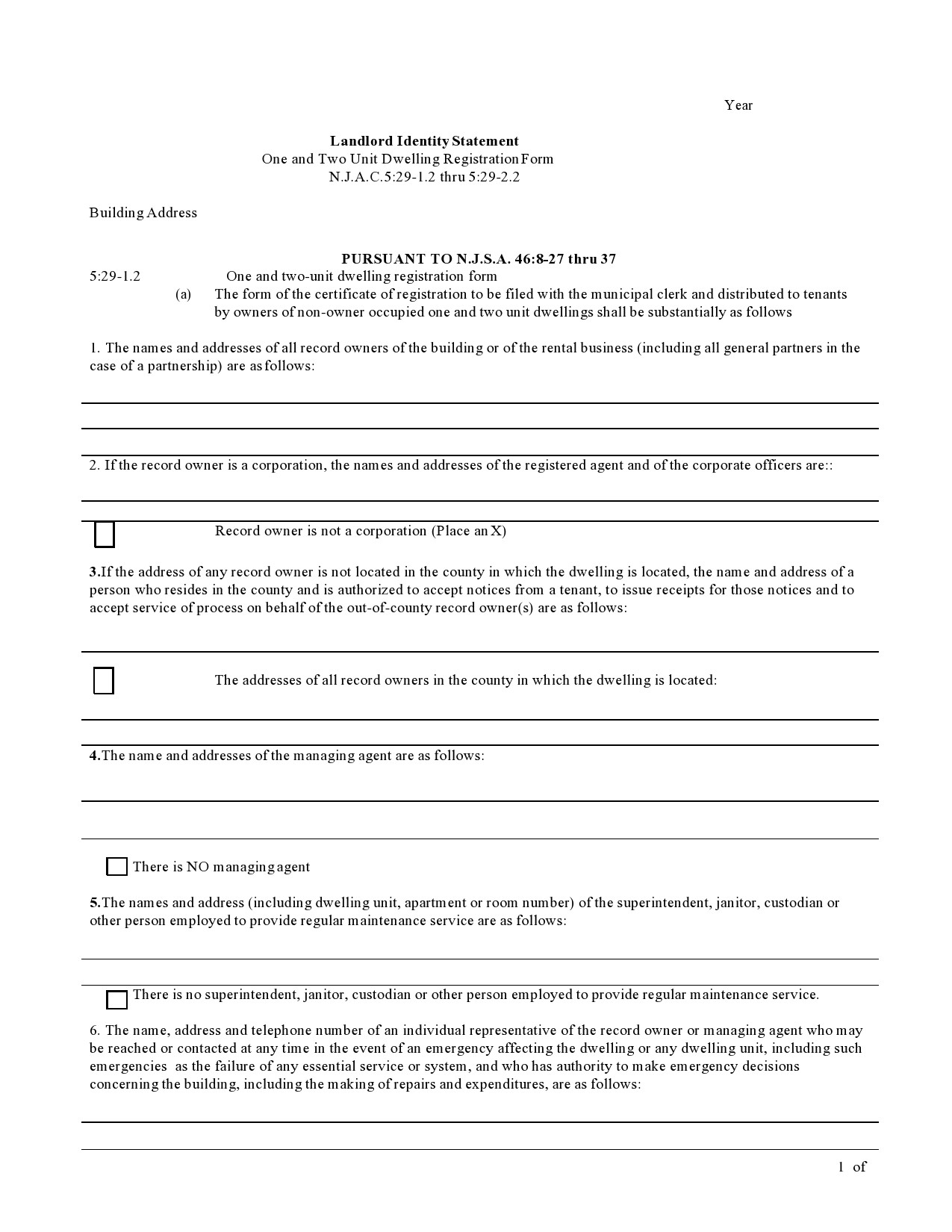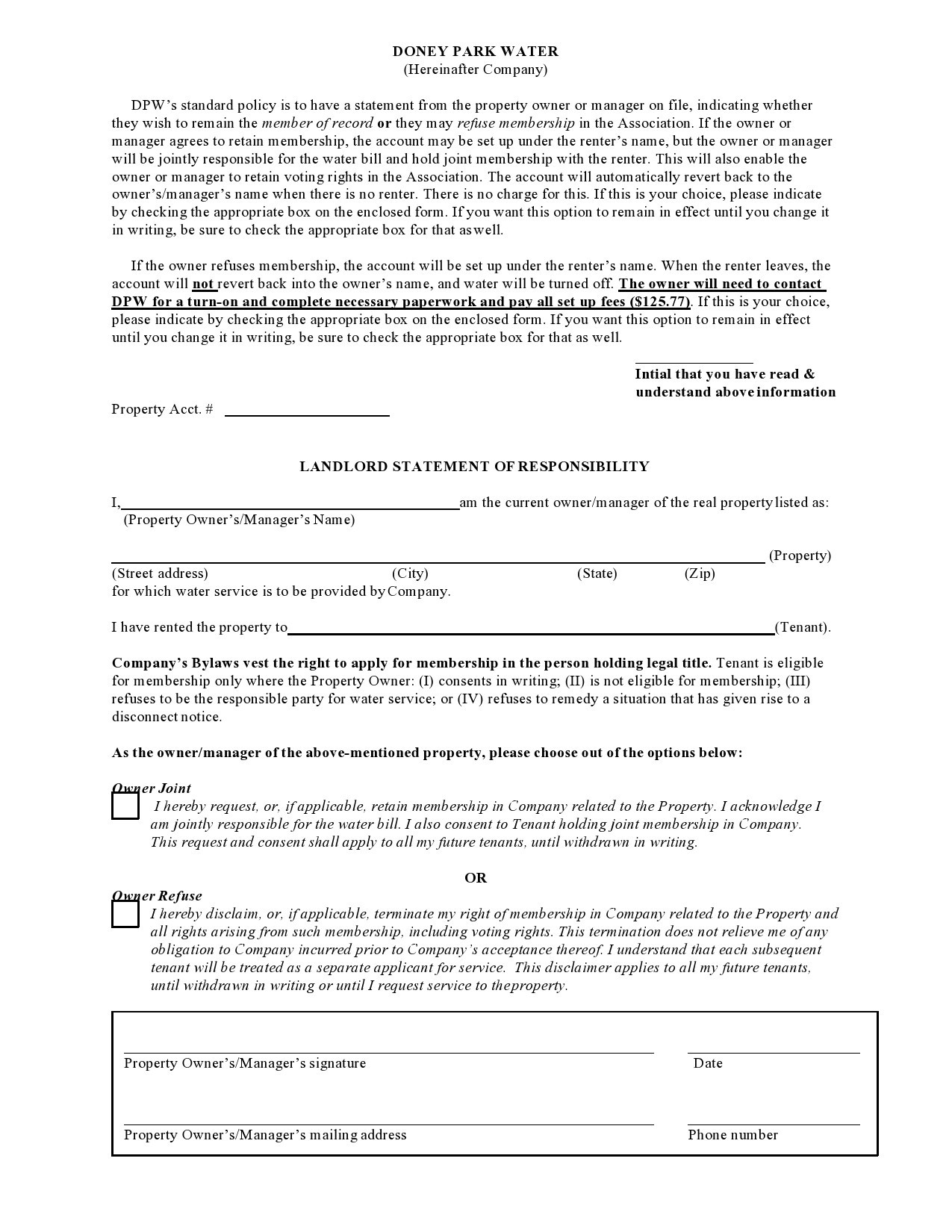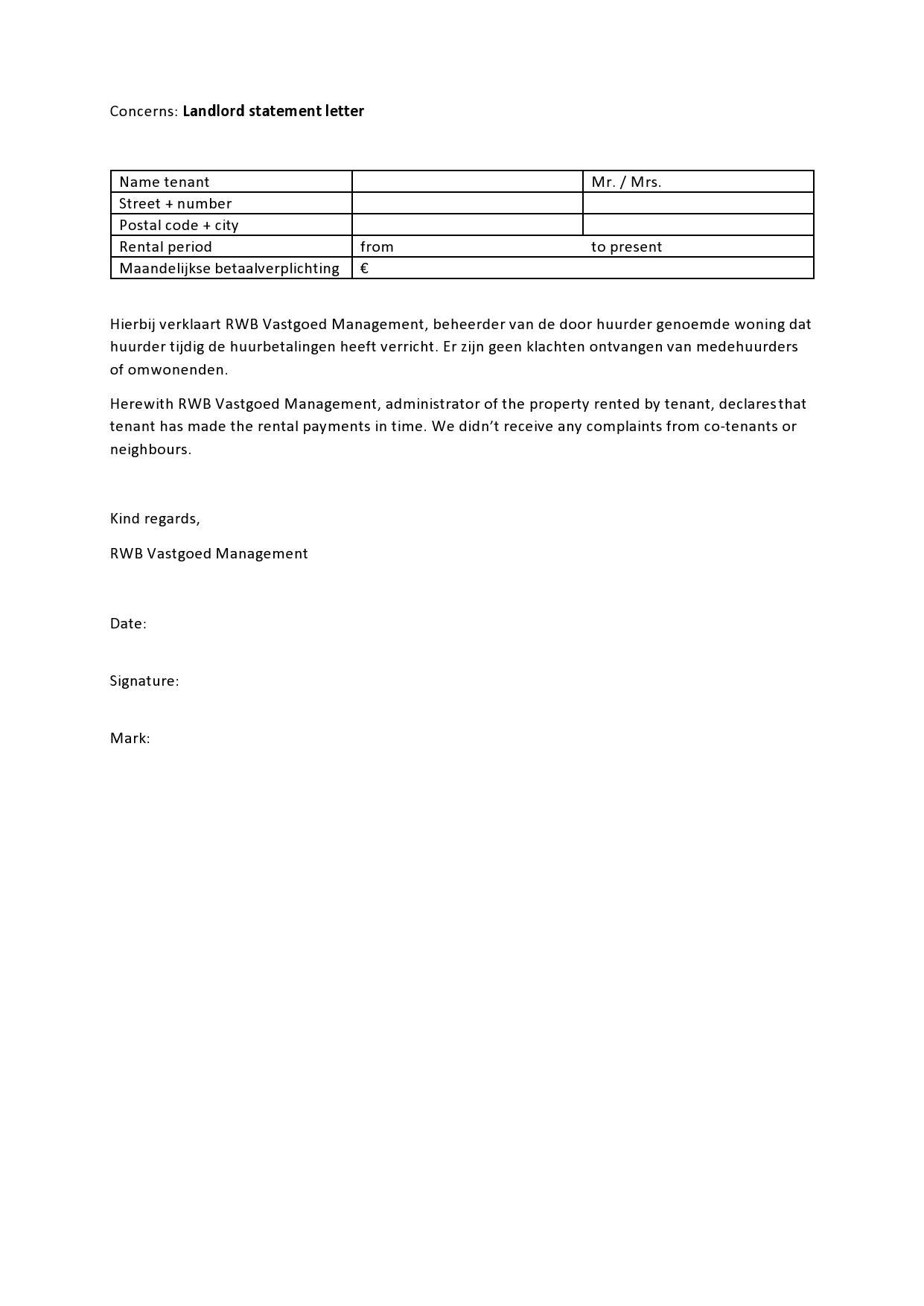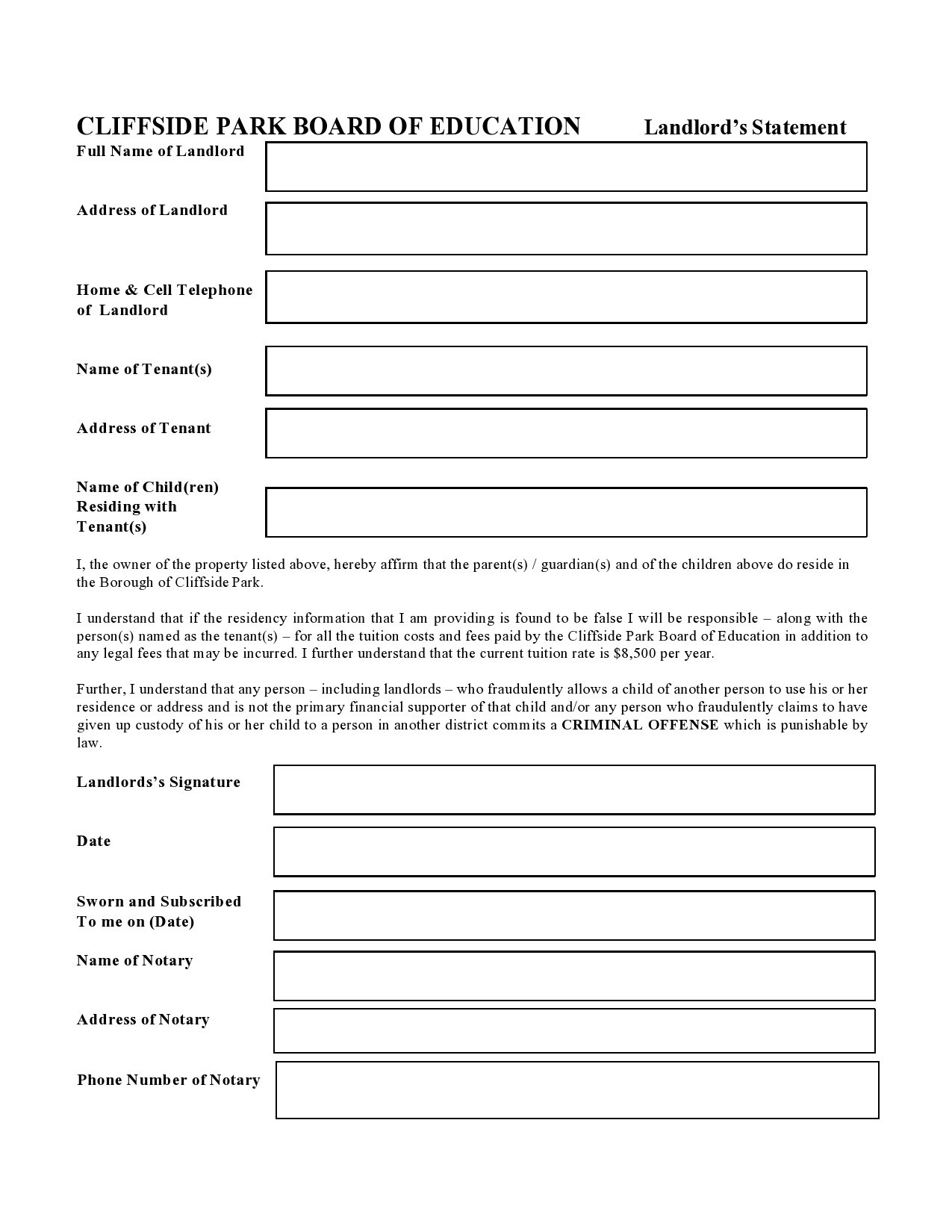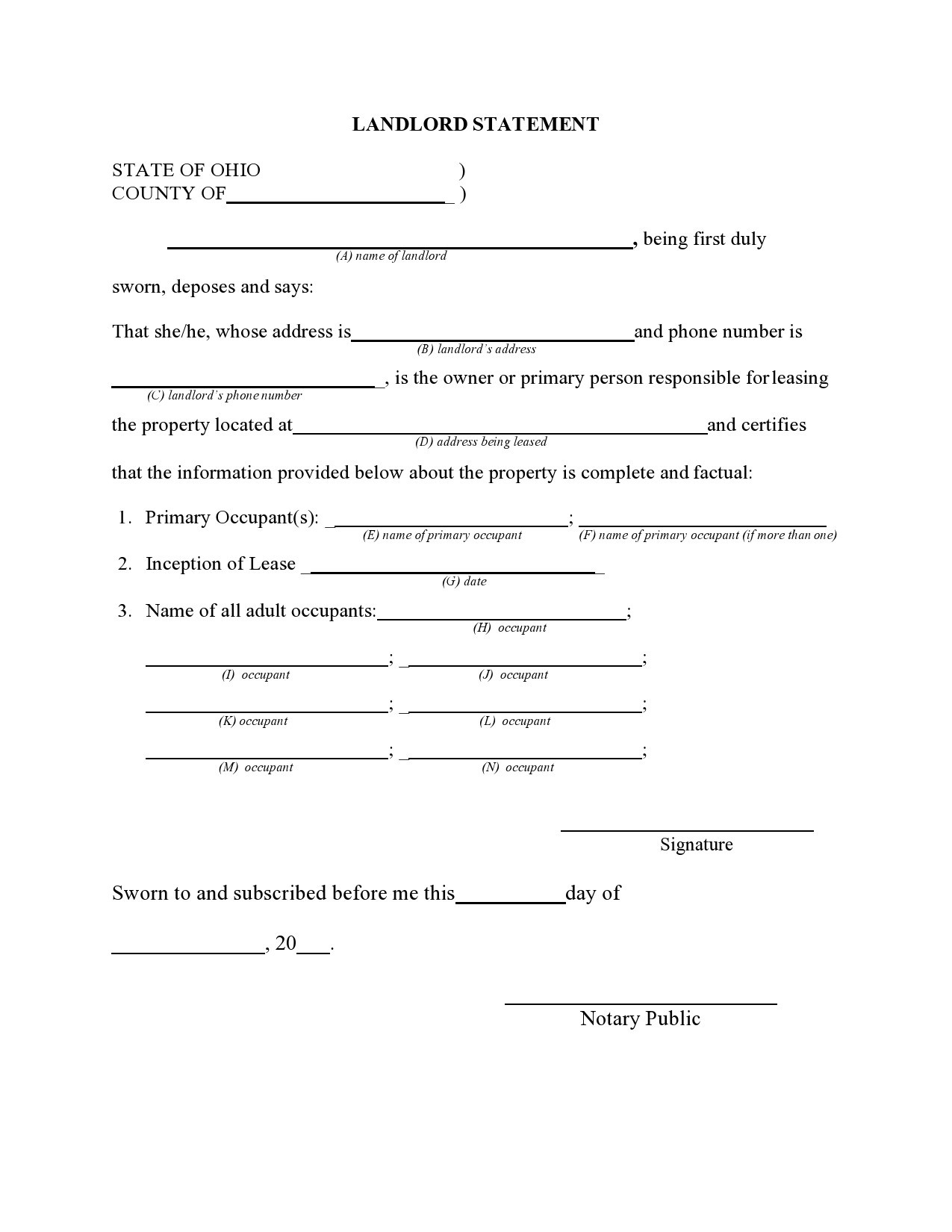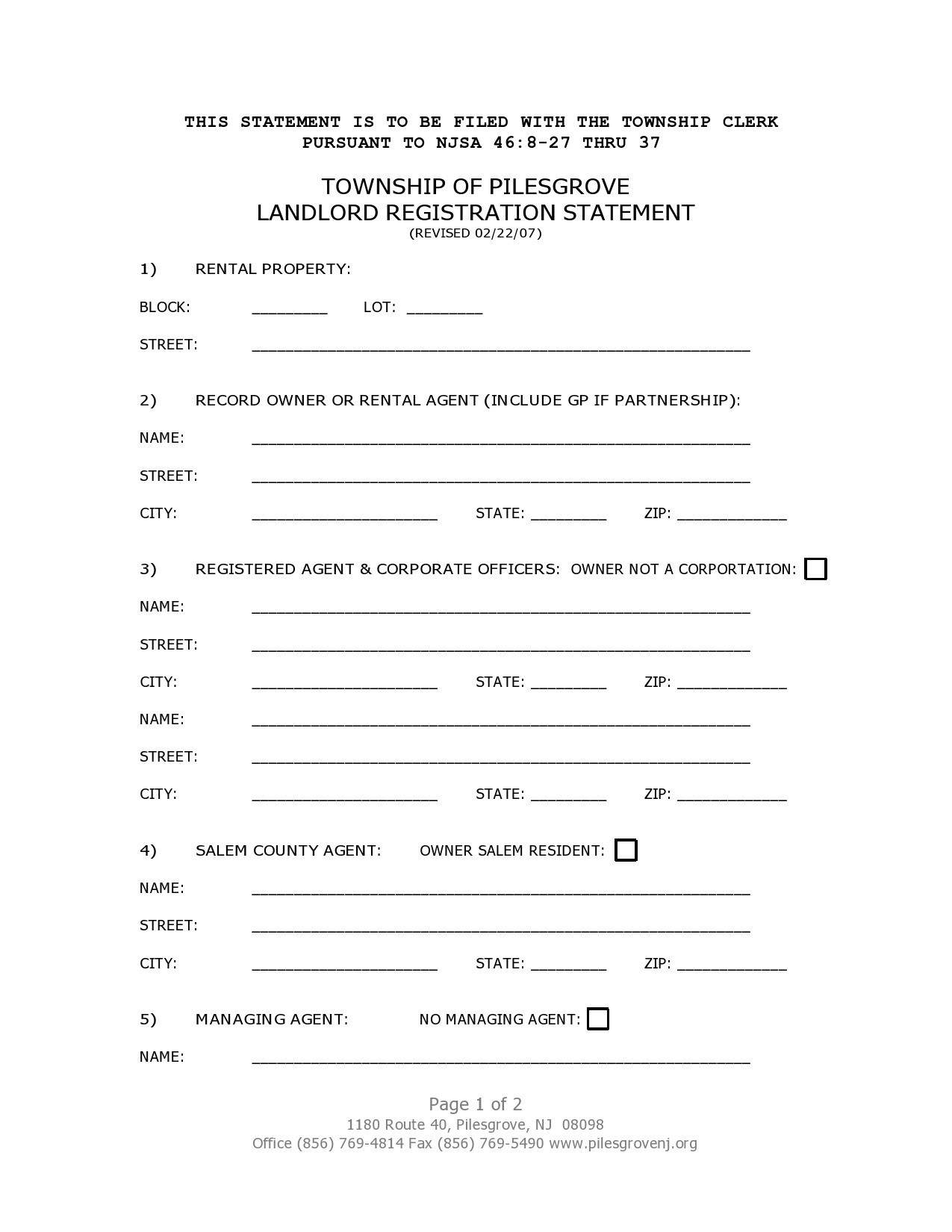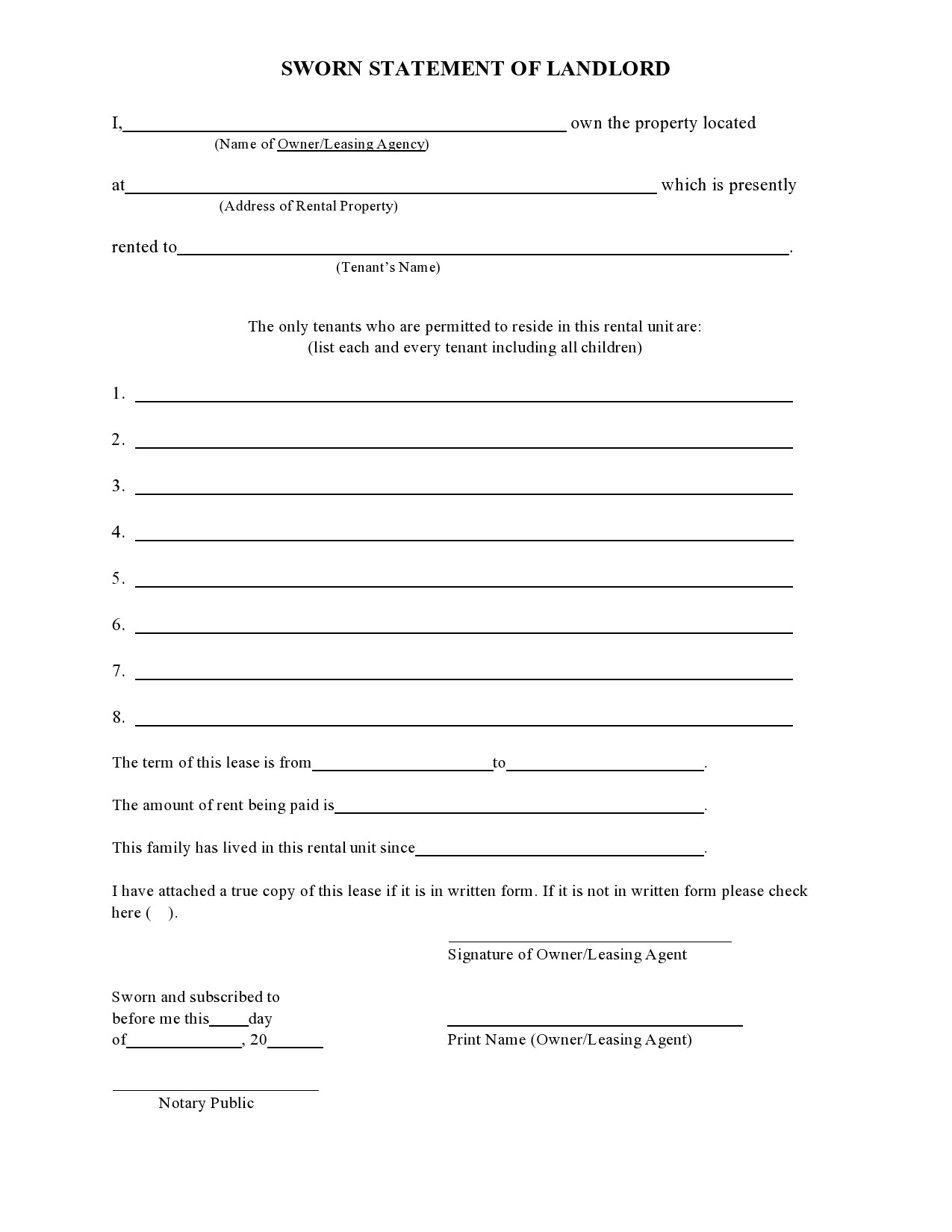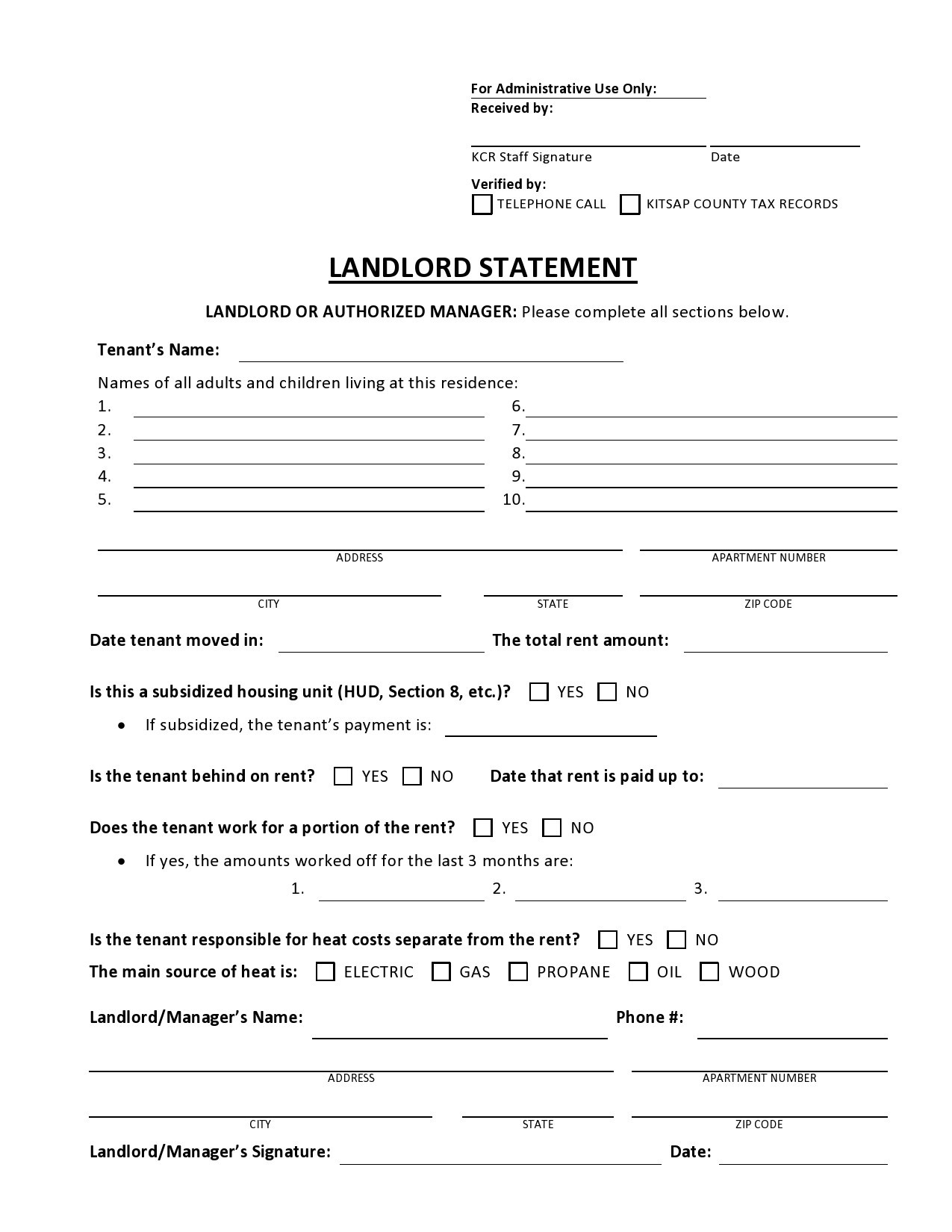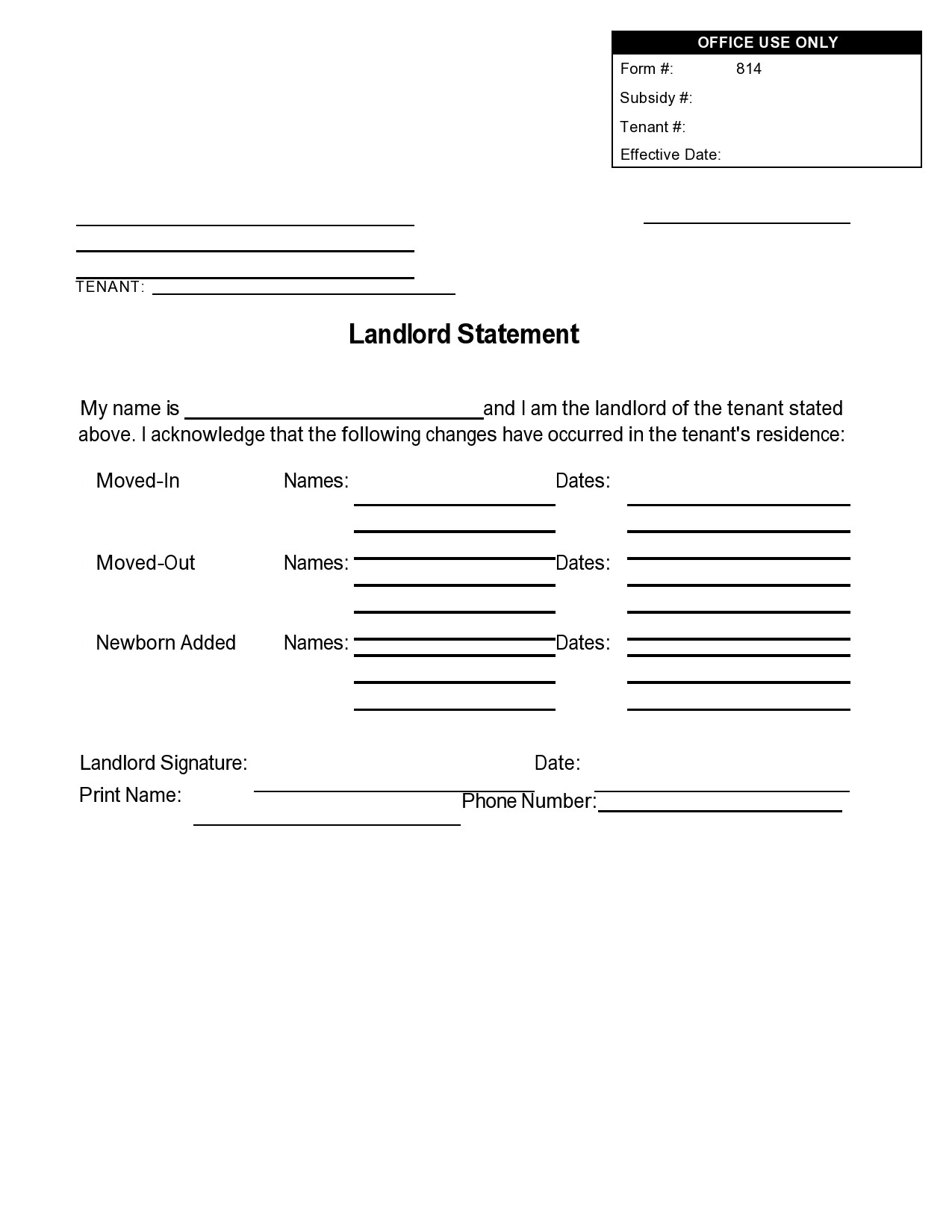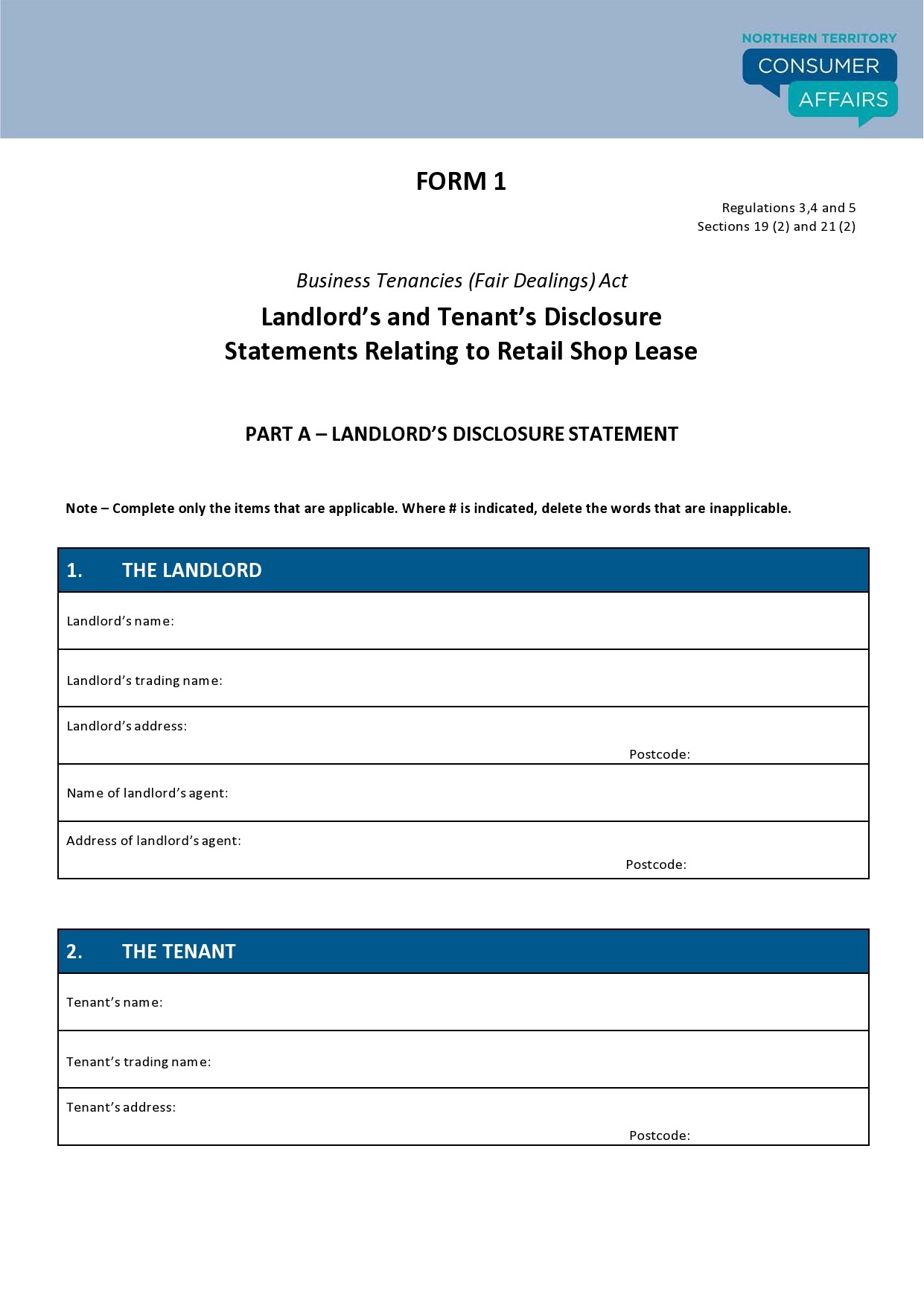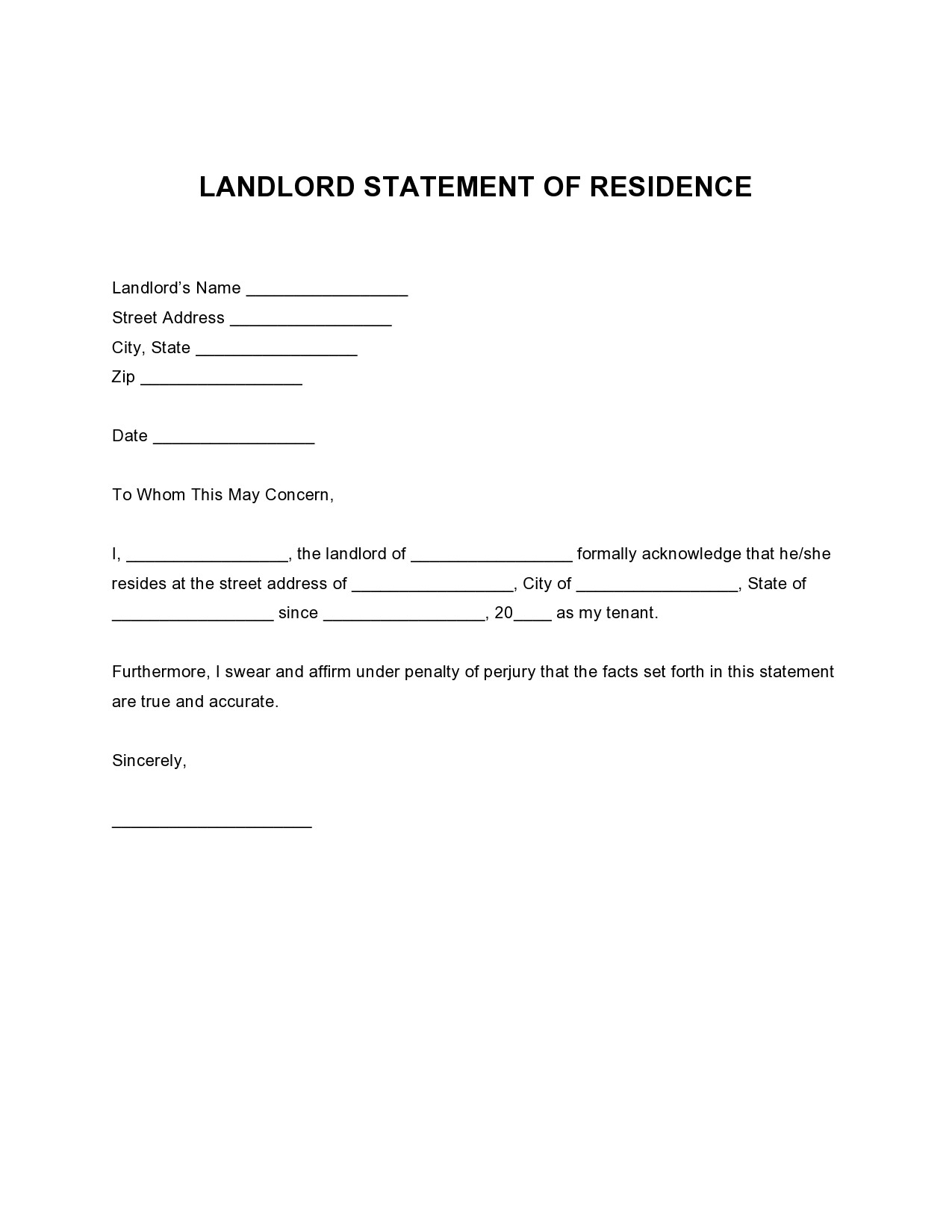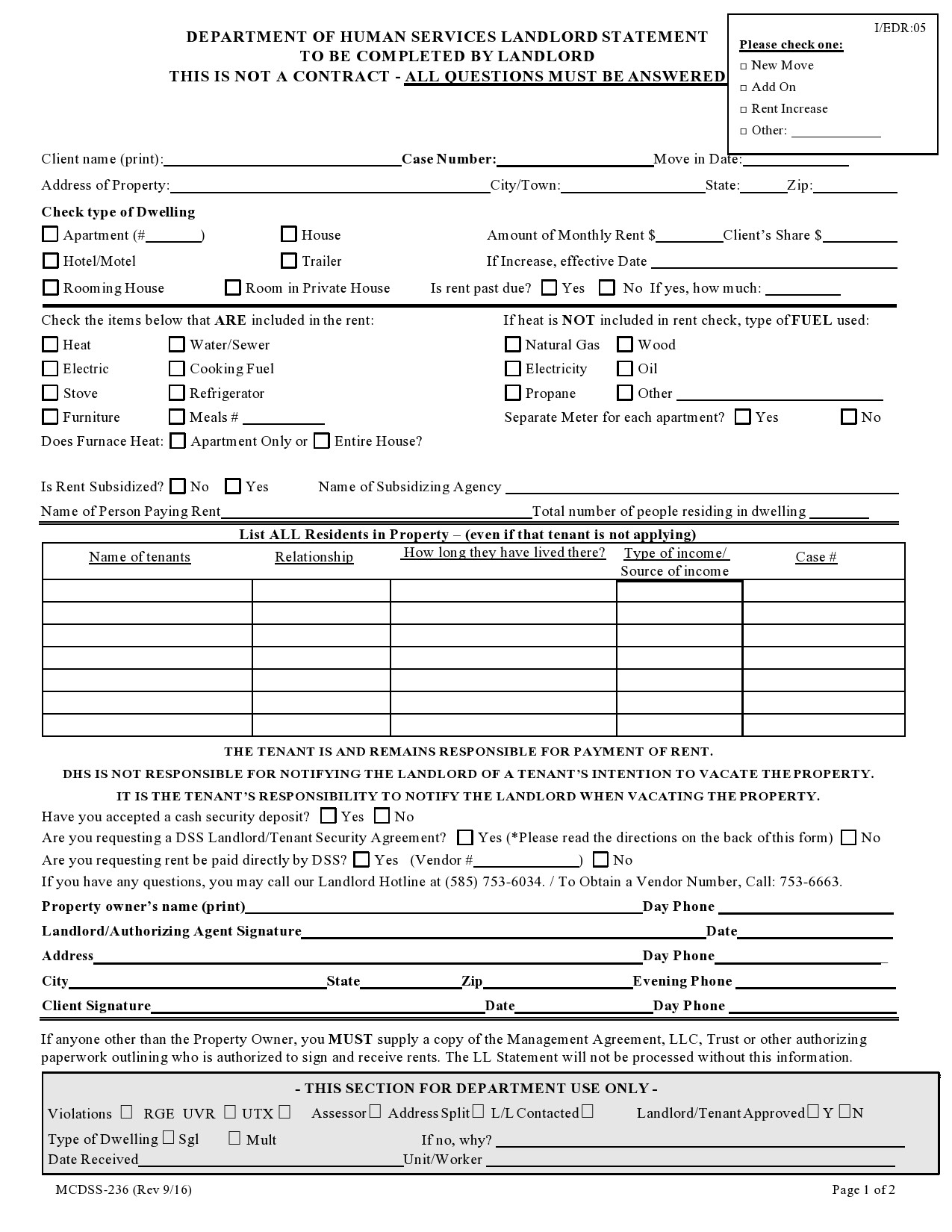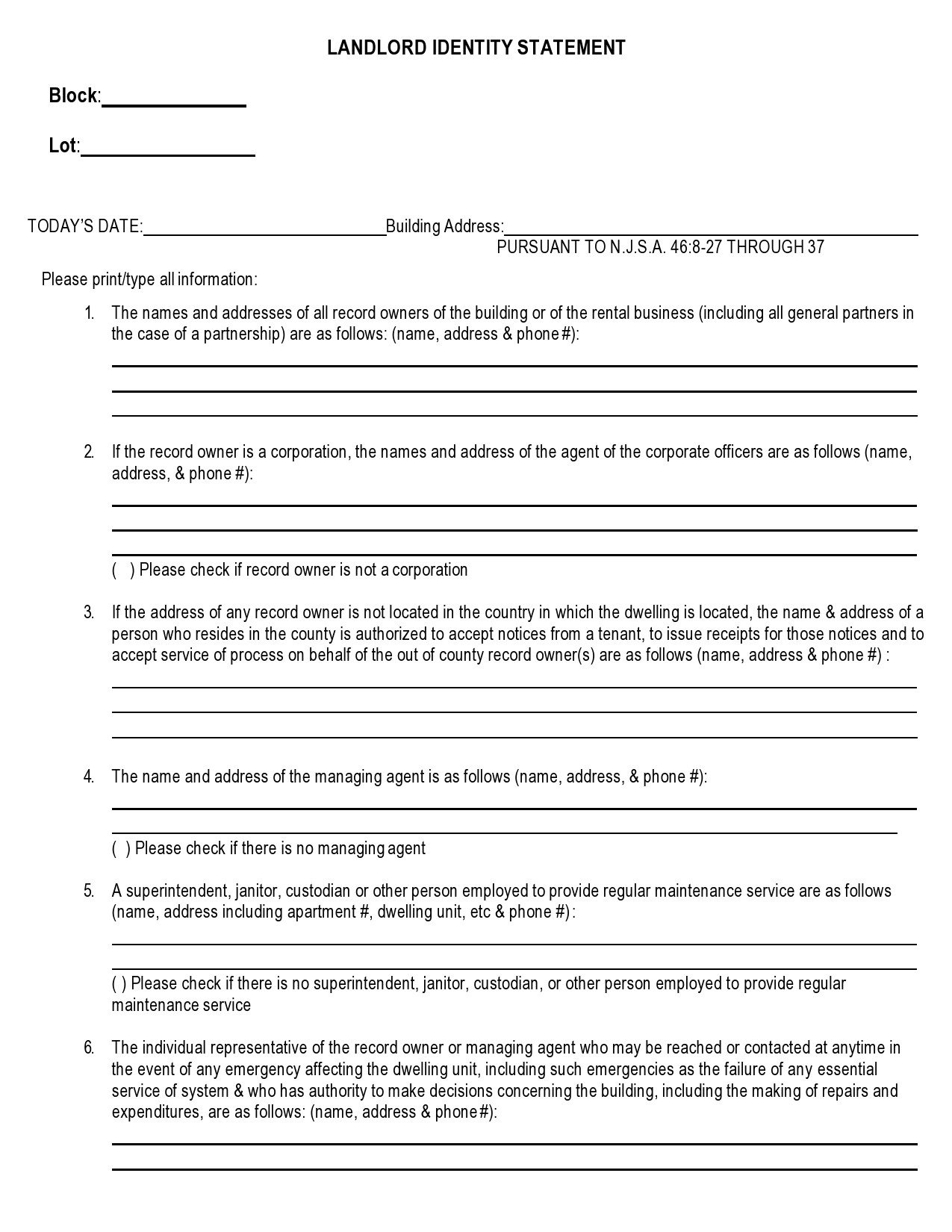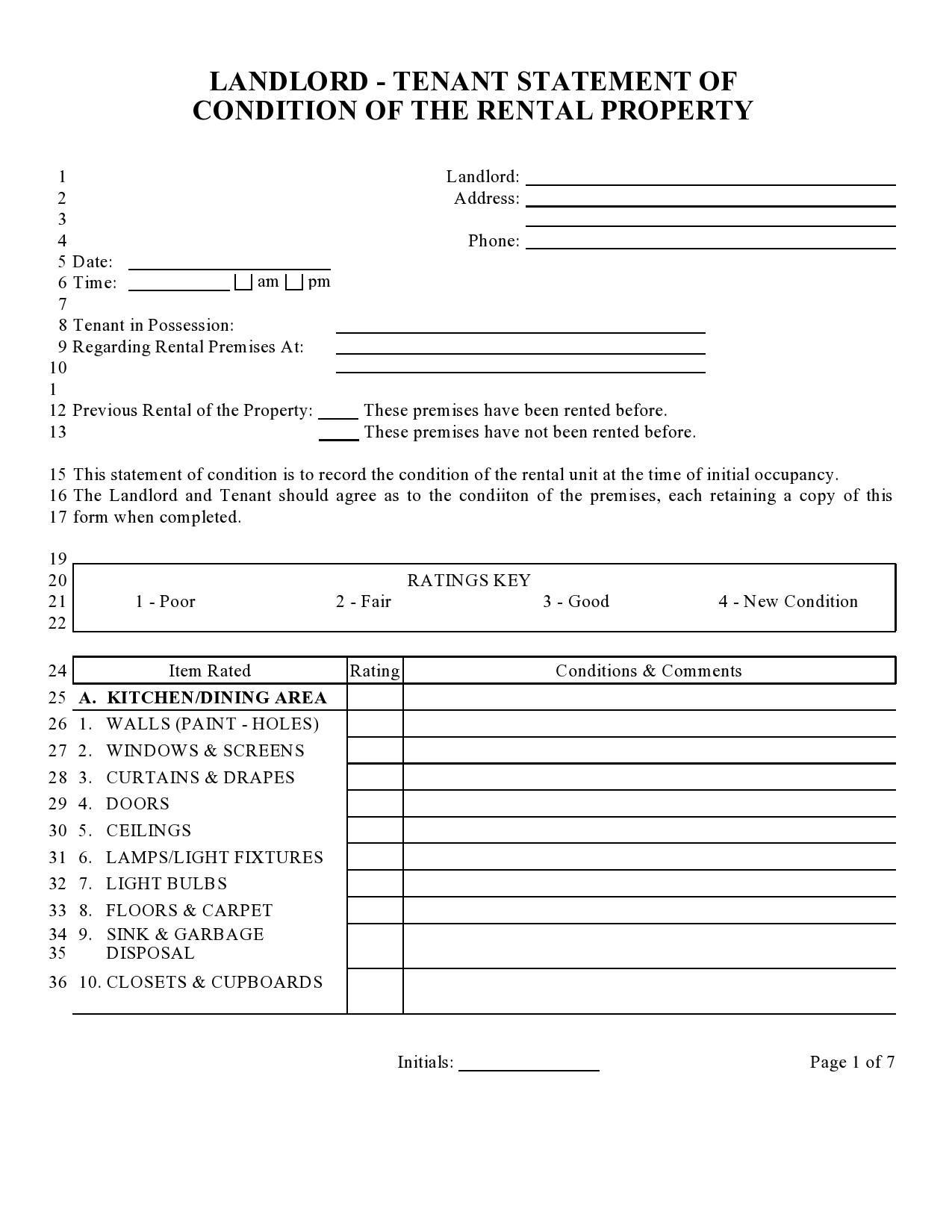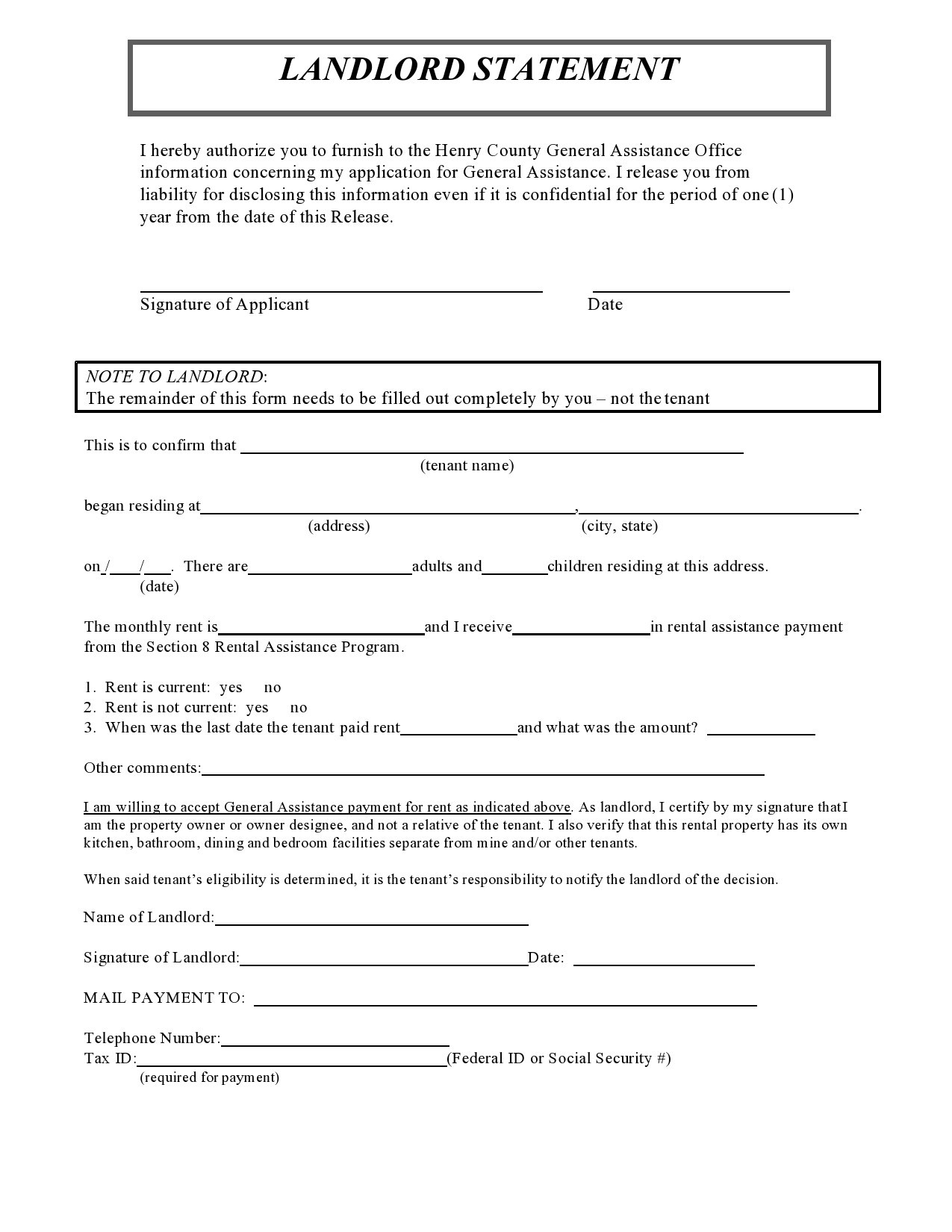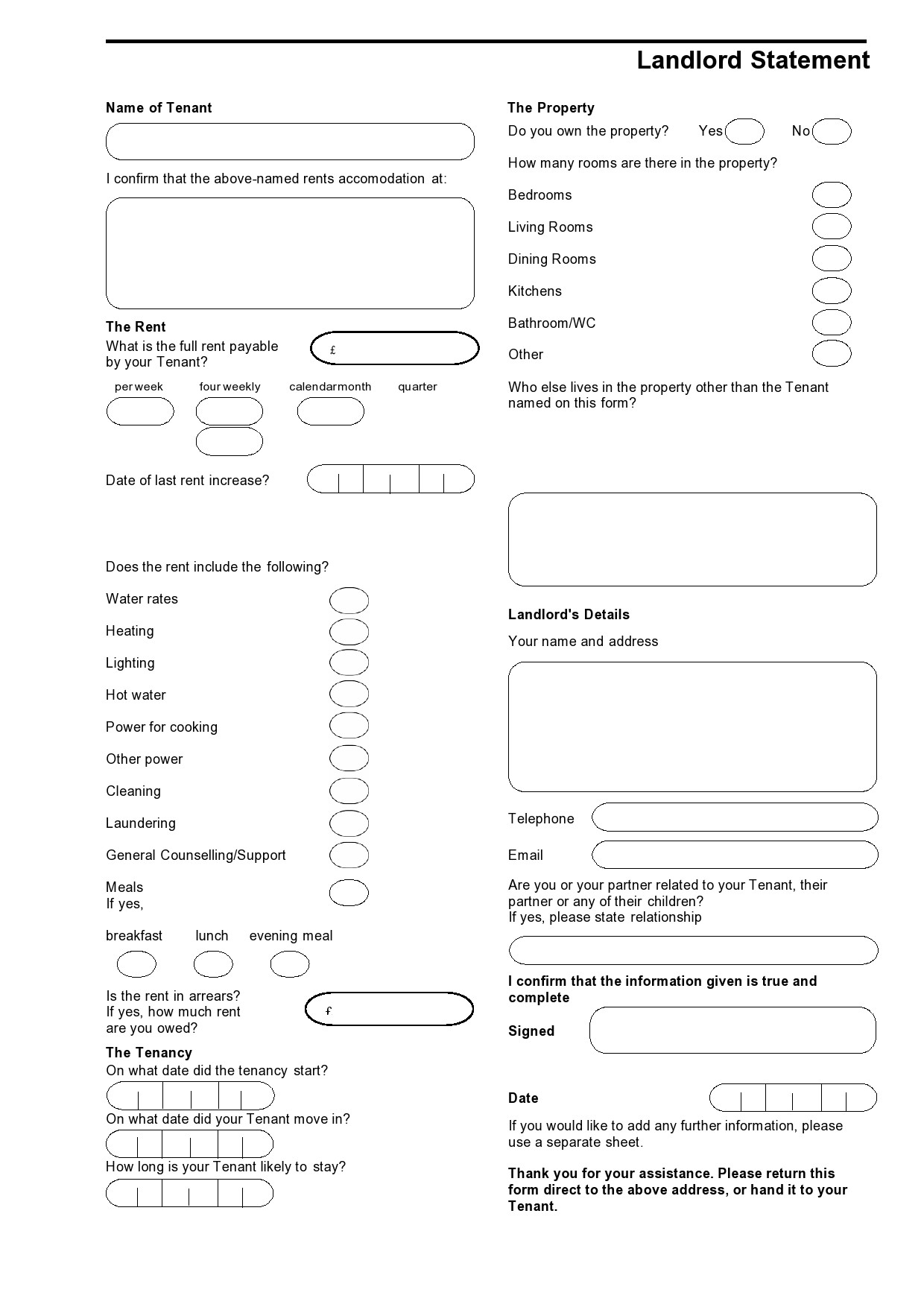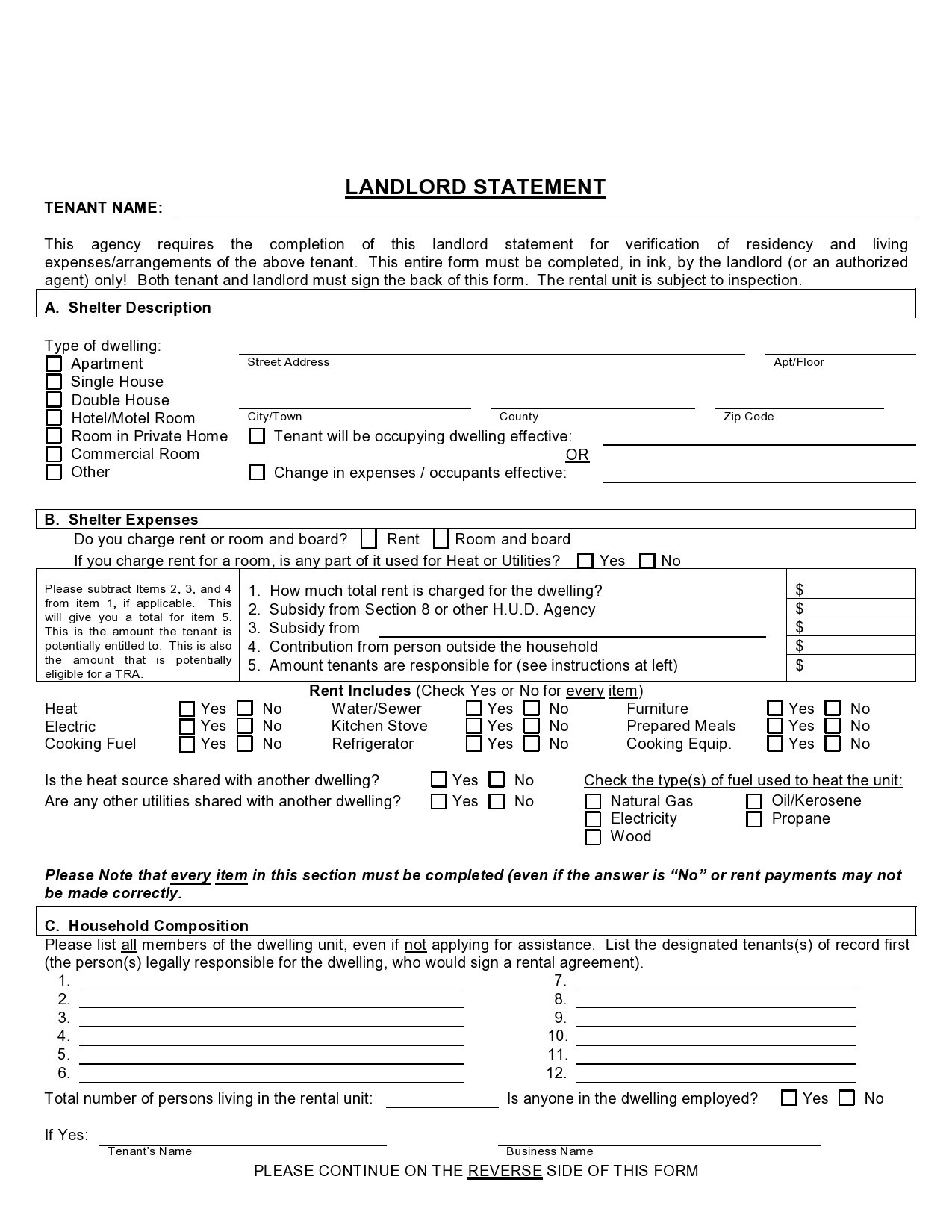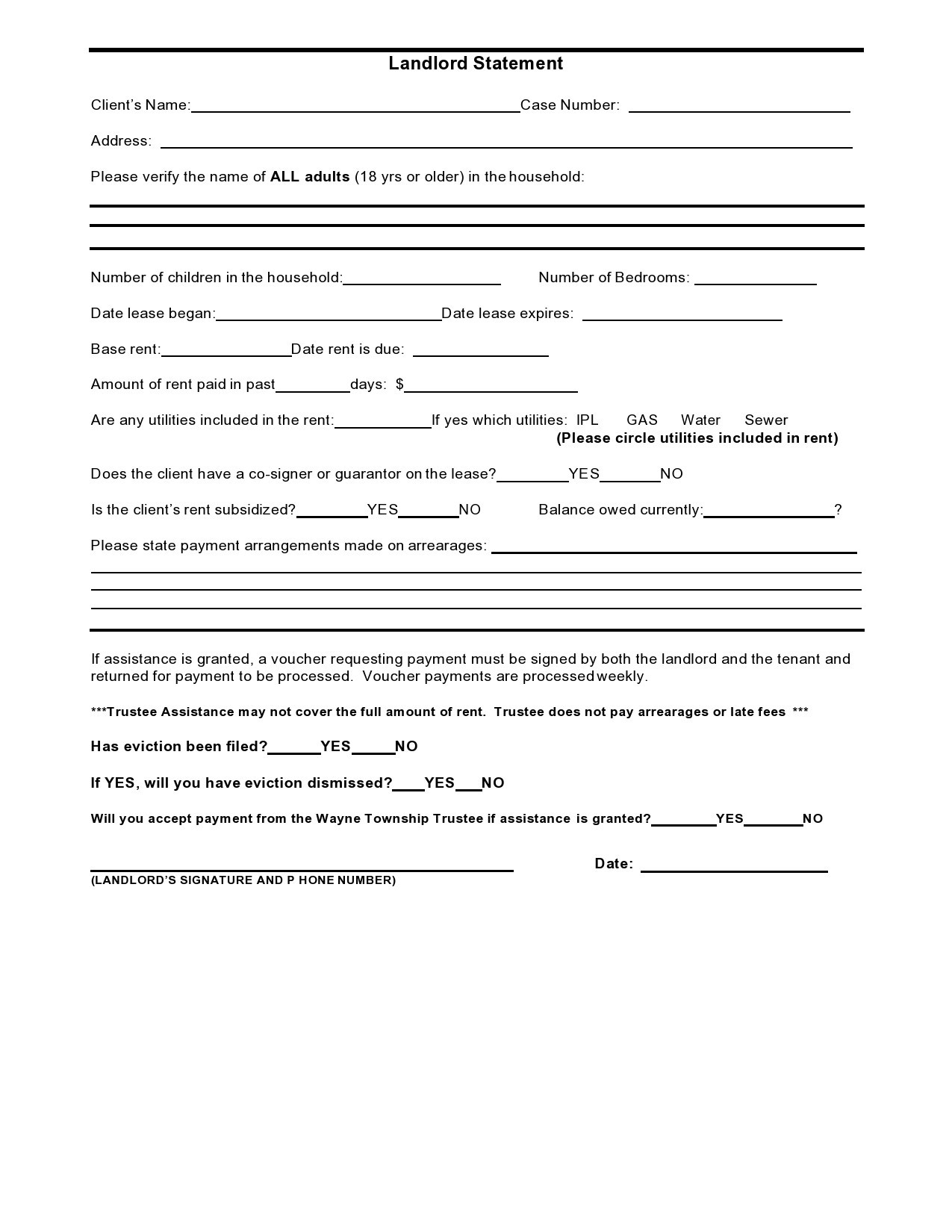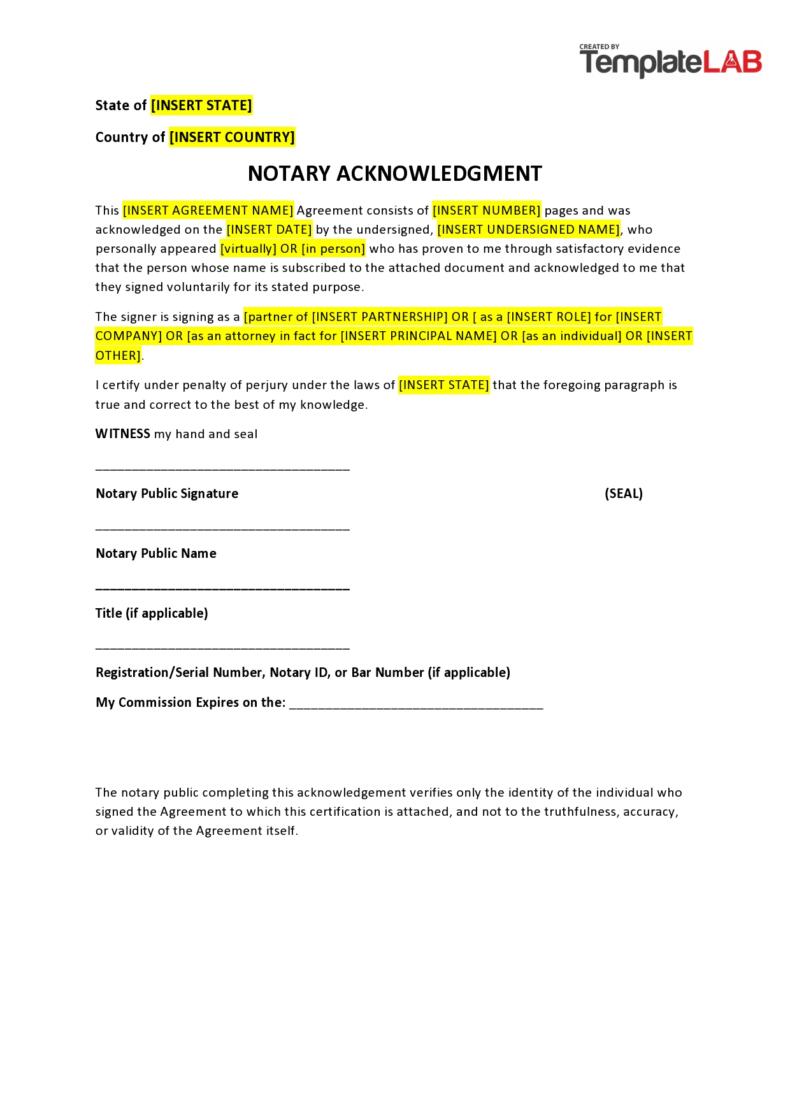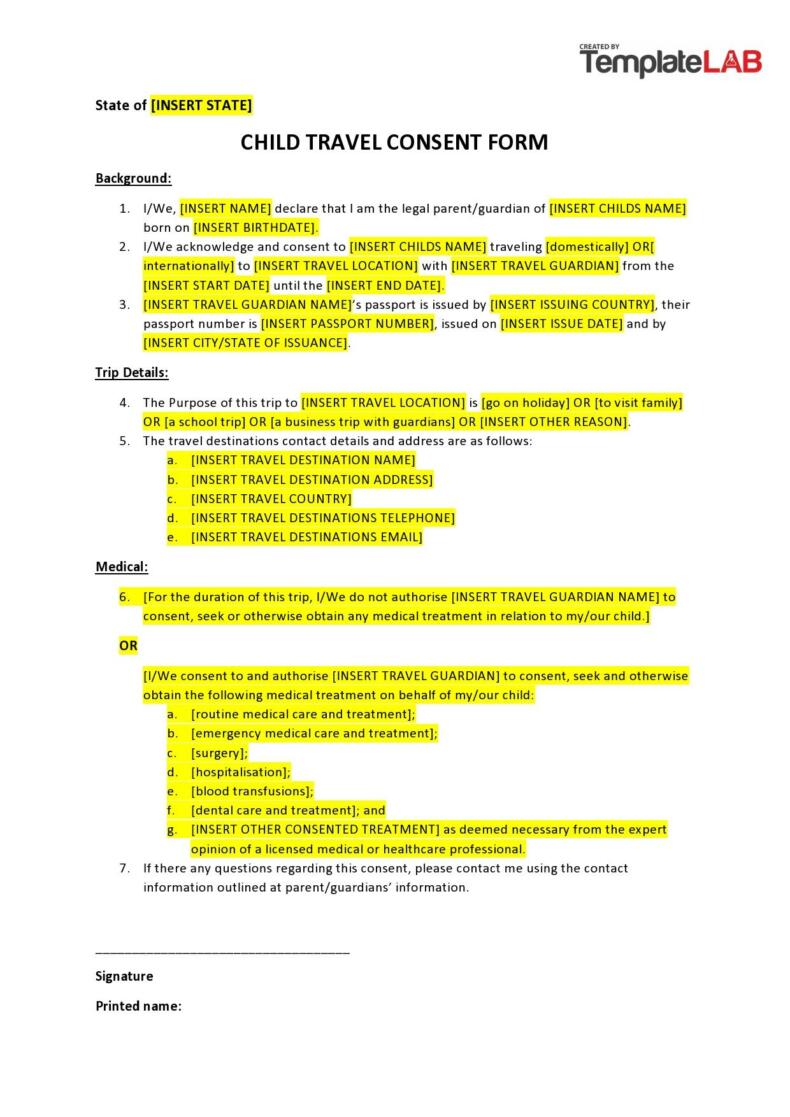Owning a property is not very easy because you need financial assistance at some point. Landlords owning apartments, houses, condominiums, land, or real estate are among the ones to seek financial help. As a property owner, you have to write a landlord statement letter to increase the chances of getting funds to help improve your apartments or rental property. Government and private entities’ need a landlord statement template before they offer you the funds. It makes it crucial to understand what a landlord statement is and how to write one.
Table of Contents
- 1 Landlord Statement Templates
- 2 What is a landlord statement?
- 3 Printable Landlord Statements
- 4 How do you write a landlord statement?
- 5 Landlord Statement Letters
- 6 What should you disclose in a landlord statement?
- 7 Landlord Statement Forms
- 8 What is the difference between a Landlord statement and a rental statement?
- 9 What other statements do landlords need to send?
- 10 What if there are any variations?
Landlord Statement Templates
What is a landlord statement?
Whenever a landlord seeks financial assistance or general assistance, these entities ask for a statement. Landlords should then fill out a landlord statement form to disclose details about their property and themselves. It helps the entities understand the reason behind the application and track the usage of their funds.
Going through a landlord statement template form helps you write it better and know the essential details to include. It helps in distinguishing information based on the type of entity you write for them. These entities are either a government authority or a private business.
Printable Landlord Statements
How do you write a landlord statement?
Landlord statement letters get filled out either through the internet or in written form. Here are some of the ways to fill it through each of them.
- Filling a landlord statement through the internet
Begin the blank by clicking the fill and sign online or ticking the blank’s preview image.
You then go to the editable PDF template by the editor’s advanced tools.
You are then required to enter your official contact details and identification information.
You have to apply a checkmark in each choice made.
Take a second look at all the fields meant for filling and ensure you wrote precise information.
Certify your landlord statement form using the sign tool that allows you to add and create an electronic signature.
After filling the form, click on done.
You are then free to print the form, save it to your device, and share it through online means. - Writing a landlord statement
It is not advisable to write it by yourself but when you need to include extra information, follow the following steps.
Write a title to show it is a landlord statement.
Choose a format that presents your work clearly and is easy to interpret.
Begin by including details of the name of the leaser.
Include the contact information, especially the telephone number, address, postal code, and city of residence.
You then write the name of the tenant.
Proceed to write the first day of their tenancy, which is the time they moved in.
You must include the tenancy address and telephone number.
Then write their current location.
Ensure you provide details of their monthly payments. Whether you have paid up the rent to date, any complaints during the stay, any monthly payment delays, or any rent subsidy.
You must provide details of the location of the property.
Then include the exact date you wrote the statement.
Provide the property signature stamp before signing.
Landlord Statement Letters
What should you disclose in a landlord statement?
The internet provides you with many landlord statement templates that are basic with the following important information. They are in three main categories to help you make the statement detailed for clarification.
- Sorted by income
You break down your subtotals and transactions in three sections in order of dates. Begin by including the income earned from the property, then your monthly or annual expenses, and the payments made within the period of application. You have to include an opening balance or balance carried forward relevant to the situation. Ensure to complete the sections without page breaks, but instead, fit them in a single page with statements proceeding to the next. - Sorted by property
When having many properties, break the statement down to distinct sections for each of them. Arrange the transactions in order of dates with a subtotal at the very end. Begin with an opening balance, then complete with a balanced carried forward. Ensure to complete the sections without page breaks, but instead, fit them in a single page with lengthy statements proceeding to the next. - Arrears statement
Landlords owning one property only sort their statements by income, but those with multiple do it based on their properties. When having areas for any property, ensure to list them under the property’s transactions. Include summarized total arrears for the landlord’s portfolio before concluding the statement.
Landlord Statement Forms
What is the difference between a Landlord statement and a rental statement?
You write a landlord statement to an entity seeking financial or general assistance majorly done by the landlord. A rental statement is a record of payment that includes the dates and rent covered written by tenants. Tenants may ask for copies of the rent ledger, while this is rare in a landlord statement.
You may receive a rent statement from the landlord to prove that you are current with the rent payments. It is a written receipt with details of payment dates, the amount paid, and signature. It is unlike the landlord statement form where the landlord fills in information about themselves and their property. It includes the dates, arrears, and expenses incurred when repairing or carrying out activities at the property.
A landlord statement determines whether they receive the assistance they deem for based on how and what they include. While a rent statement from the landlord only provides details of your payment and rental arrears.
What other statements do landlords need to send?
As a landlord, you may have to attach additional statements to the tenancy agreements you create for new tenants. You must sign the rent statement from landlord and the tenancy contract. Then you may send other statements along with your landlord statement letter including:
- Insurance Statement
It is a requirement to provide in new tenancy agreement relevant insurance information. This includes whether the property comes insured or not along with the excess amount of any policies related to the tenant’s liability for damage or destruction.
If the property you’re renting out is part of a business, you must include relevant insurance information related to the tenant’s liability for damage to both the shared facility and the rented property.
Moreover, you must also include a statement that informs your tenants that they can request a copy of each insurance policy unless you have already given these to them. You must also inform your tenants if the information in these statements changes within a reasonable time period. - Insulation Statement
It is also your responsibility as a landlord to issue an insulation statement to all new tenancy agreements. This also applies to tenancy agreements that are in the process of renewal. It’s a requirement for all rental properties to have both flooring and ceiling insulations on places where they’re reasonably practical to install. This statement must include:
Whether insulation exists in the rental property or not.
Where you have placed the insulation.
What type of insulation you used.
The condition of the insulation.
This statement template should comply with all the requirements for insulation disclosure as specified under the Residential Tenancy Act. It’s also a good idea to attach an insulation evaluation from a professional to your agreement. This only becomes a valid statement if:
It includes all of the required information.
You have affixed your signature on the document.
You can also use the evaluation from an insulation professional to complete this statement. This should include all of the relevant information regarding the insulation installed in the ceiling, underfloor space, and walls of the rented property. If you can’t find the information you need for specific insulation like those installed in walls, include this information instead:
A description of the information you can’t find.
An explanation of why you cannot find the information.
A confirmation that you have done everything to try and find the information.
It’s important to note that you might get fined if you don’t include:
A complete insulation statement.
Information that you know is either misleading or false.
What if there are any variations?
A variable refers to any change to a tenancy agreement that you and your tenant have agreed to. You should make any changes in writing. These changes also require the signatures of you and your tenant along with the effective date of these changes.
You can write the variation as part of your tenancy agreement or create a new document then attach it to the agreement. You must furnish a copy of this variation to your tenant.
For any increase in rent, the notice won’t need a written variation or the signature of your tenant as you can issue this without their prior agreement as long as this notice complies with all of the legal requirements.
In some cases, you and your tenant could agree to an increase in rent because of changes made you have made that would benefit them. For instance, if you make any improvements to the rented property. In such a case, you can both consider the rent increase a variation.

